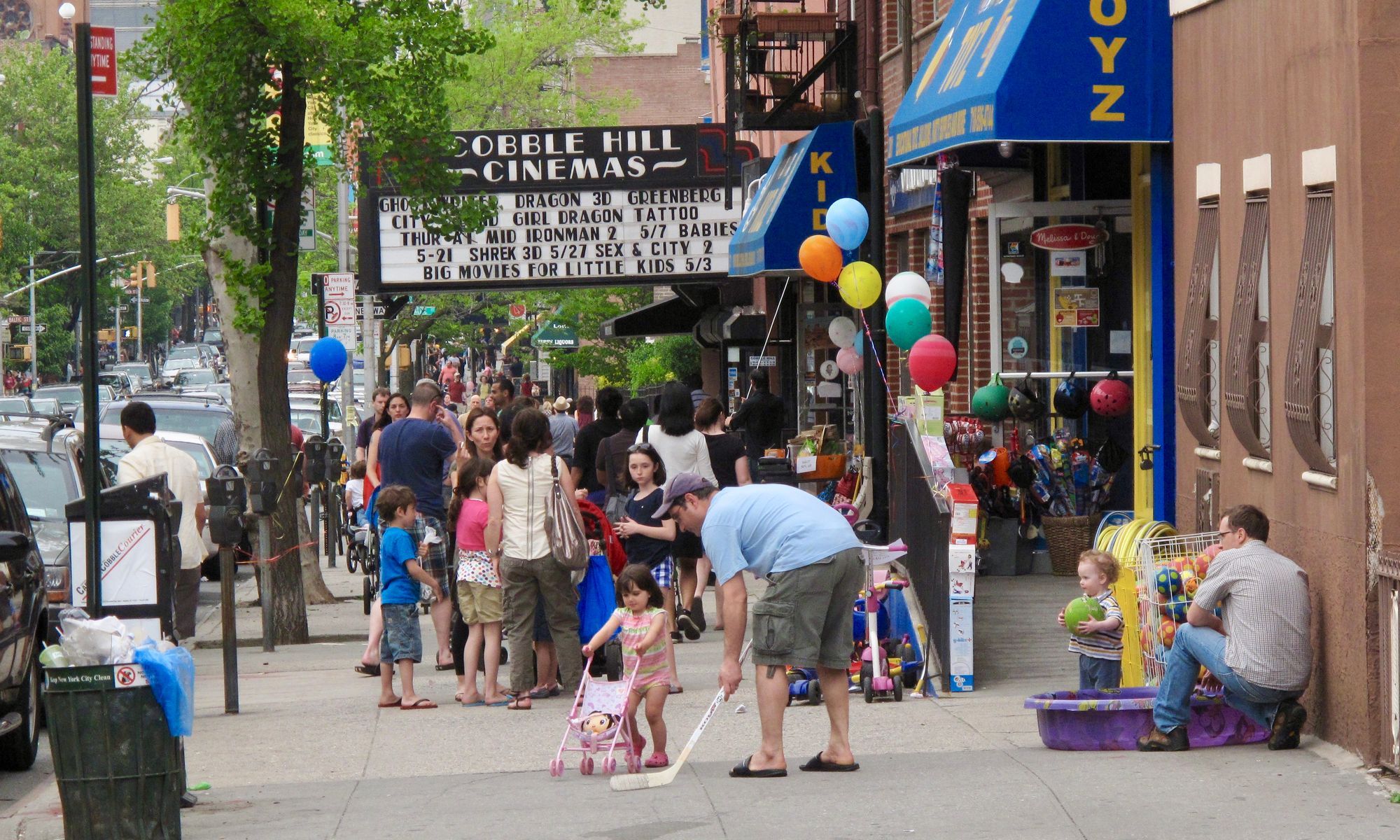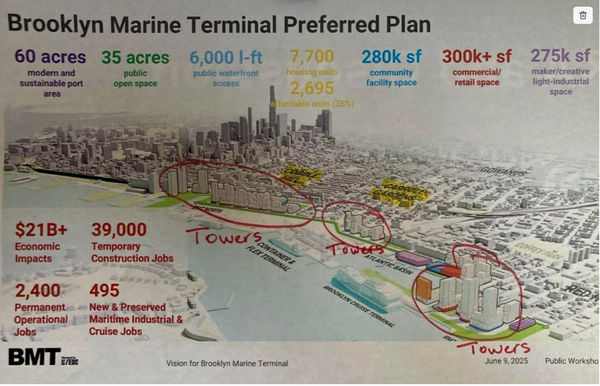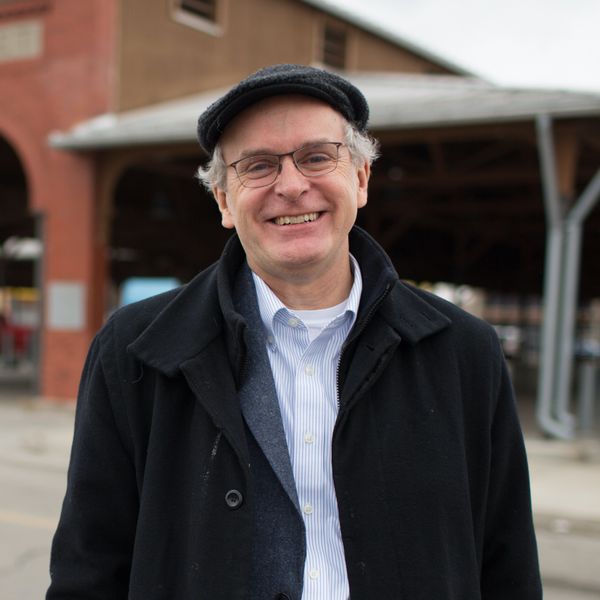The Changing Neighborhood Life of Two Cities
NOTE: This article has been updated to reflect positive changes that post-pandemic life has brought to the streets of NYC. The original post was published on January 31, 2021.
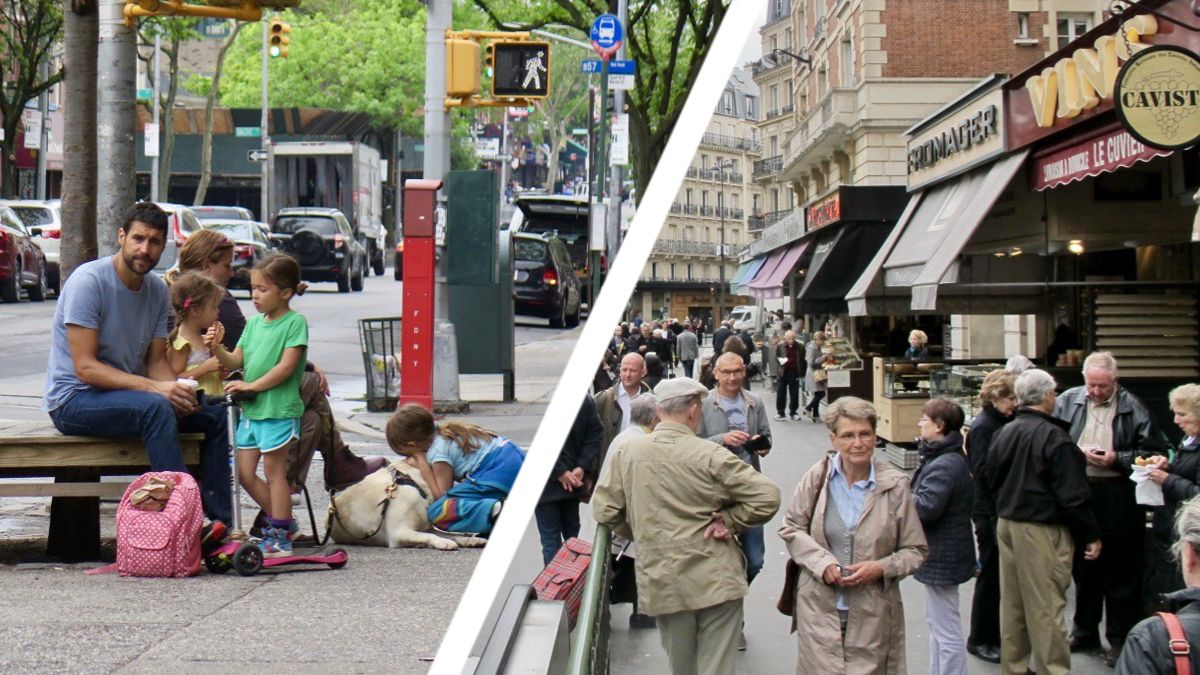
Ask anyone to name the world’s truly great cities, and chances are that Paris and New York will top the list.
Both places live up to their reputations as soulful cities stocked with exciting and satisfying pleasures. A stroll through Greenwich Village or the Marais, a night out in Little Italy or Rue de Buci, people watching in Prospect Park or Luxembourg Gardens are worthy of everyone’s bucket list.
But as long-time residents of New York City and frequent visitors to Paris, we have sadly come to the conclusion that the two cities are moving in opposite directions. While Paris keeps building on its assets to create a better place for residents and visitors, New York is gradually losing some of the qualities essential to its greatness.
"There are more and more of us fighting for a different vision of the world—a world that takes care of our most precious resources: the air we breathe, the water we drink and the places we share."
— Anne Hidalgo, Mayor of Paris
There are many reasons for this, but foremost among them is a sharp divergence in priorities among political and civic leaders in the two cities. Paris Mayor Anne Hidalgo declares we are “fighting for a different version of the world — a world that takes care of our most precious resources: the air we breathe, the water we drink and the places we share.” Meanwhile, in New York, it’s still business as usual despite the looming threat of climate chaos, social inequity, and misguided development trampling the needs of neighborhood people.
Lessons From the Street
So, let’s get specific about the different approaches to the future being undertaken in each city. We focus here on examples from Brooklyn’s Cobble Hill/Carroll Gardens neighborhood, where we’ve both lived for more than 40 years, and the Left Bank, where we have stayed scores of times over the past 25 years while visiting Paris.
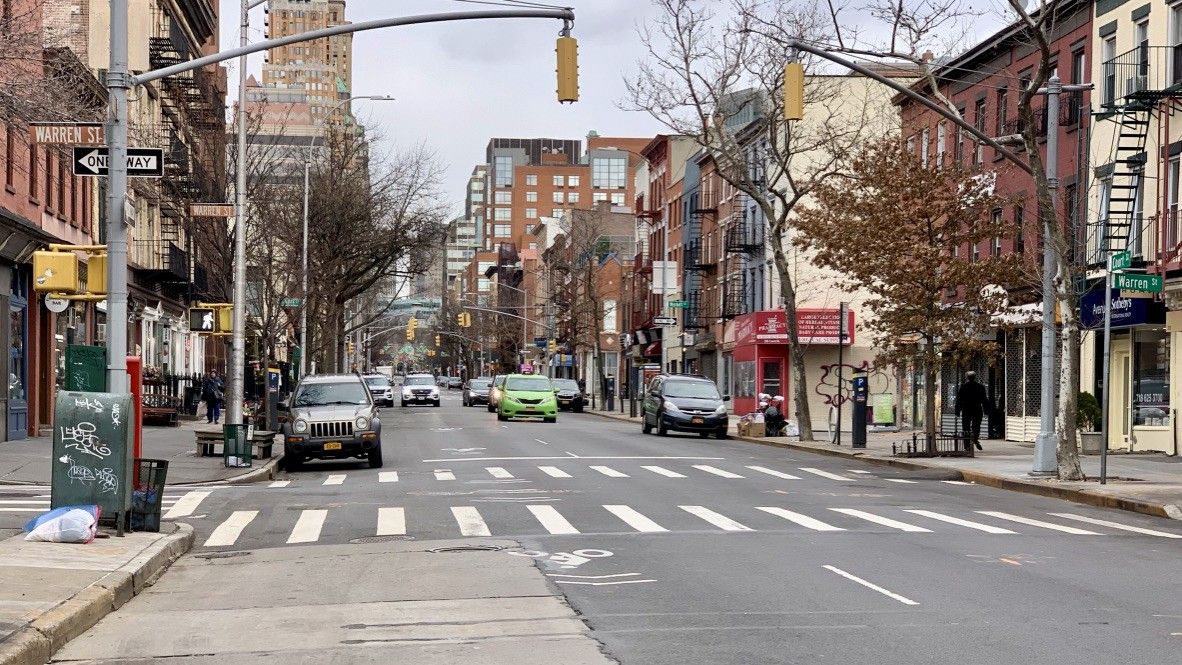
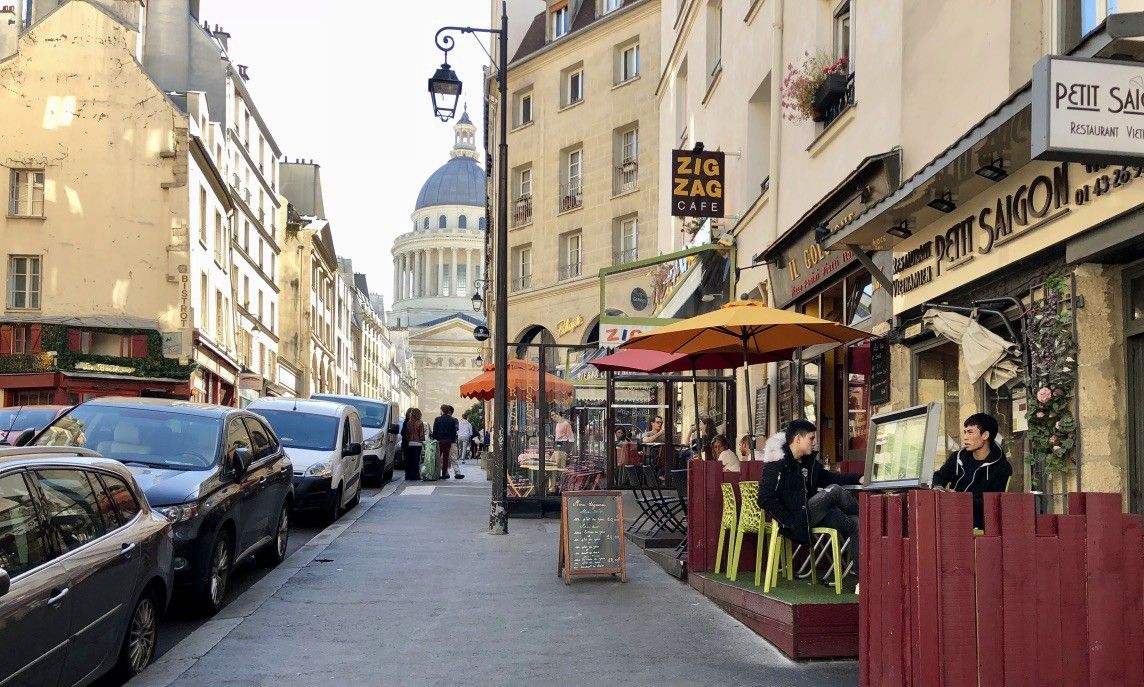
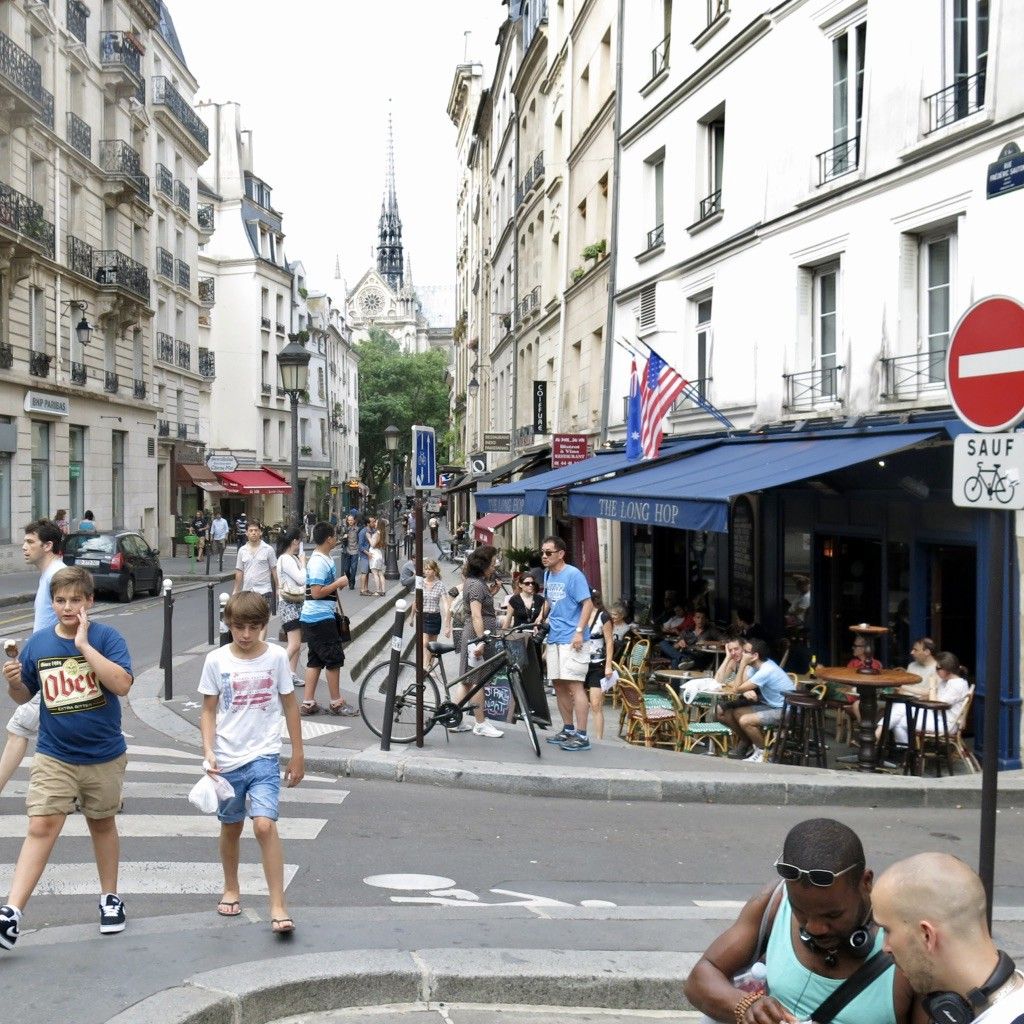
Paris: From Place Maubert looking West toward the Pantheon (left) and East toward Notre Dame Cathedral
We choose to spend time in both places for the same reason— almost everything we want can be found within strolling distance along routes brimming with so much street life that each walk feels like a different experience. Here are our placemaking recommendations on what enhances or diminishes these qualities based on what we’ve observed in the Left Bank and Brooklyn.
In both places, the right kind of building at a key location can go a long way toward creating lively gathering places for the community.
The historic Foster Building along Court Street (near Wyckoff Street) in Cobble Hill enlivens the street by creating a sociable hub where folks gather to eat, get a haircut, and shop. It is a high-density yet human-scaled place, meeting the social and material needs of nearby residents.
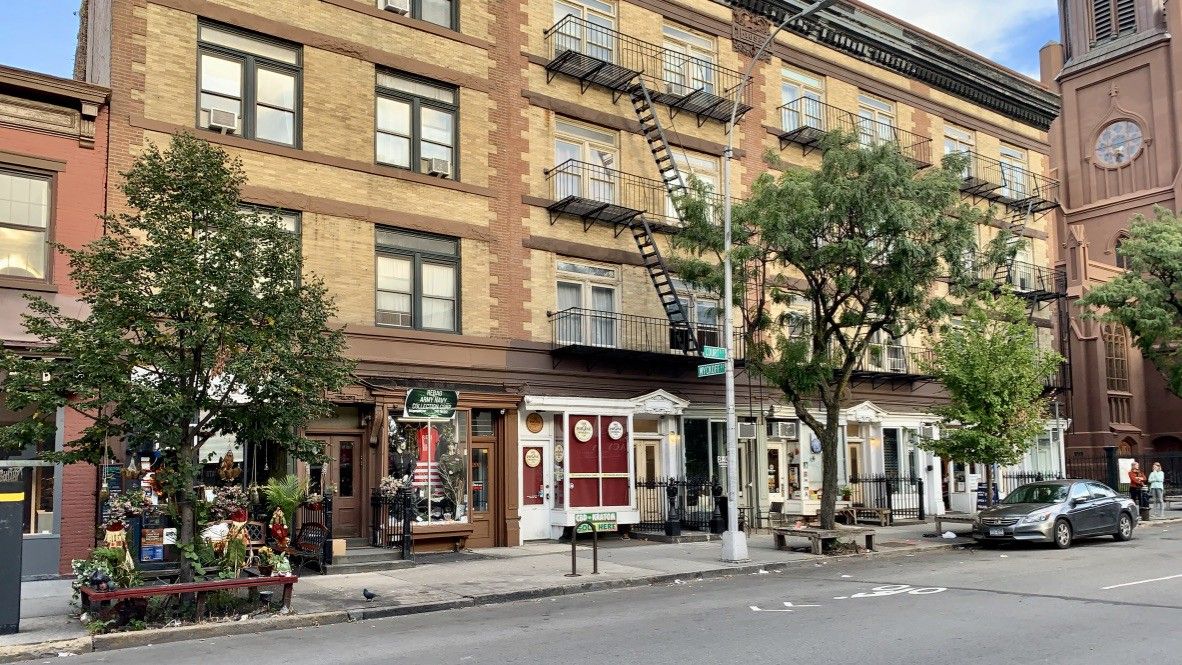
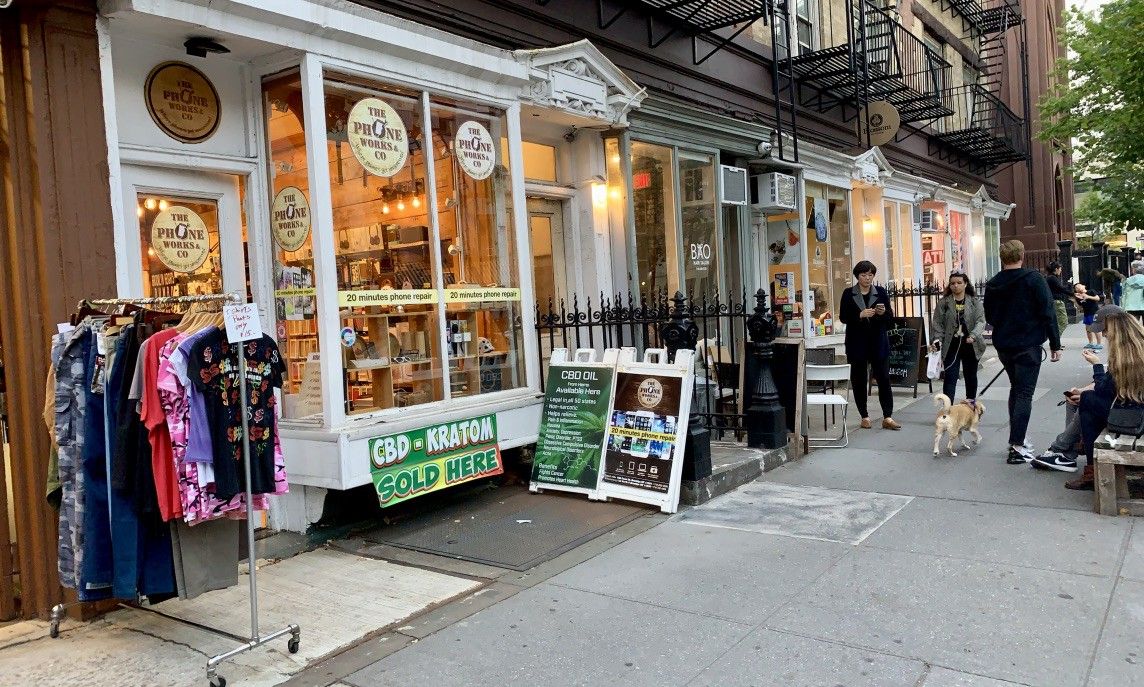
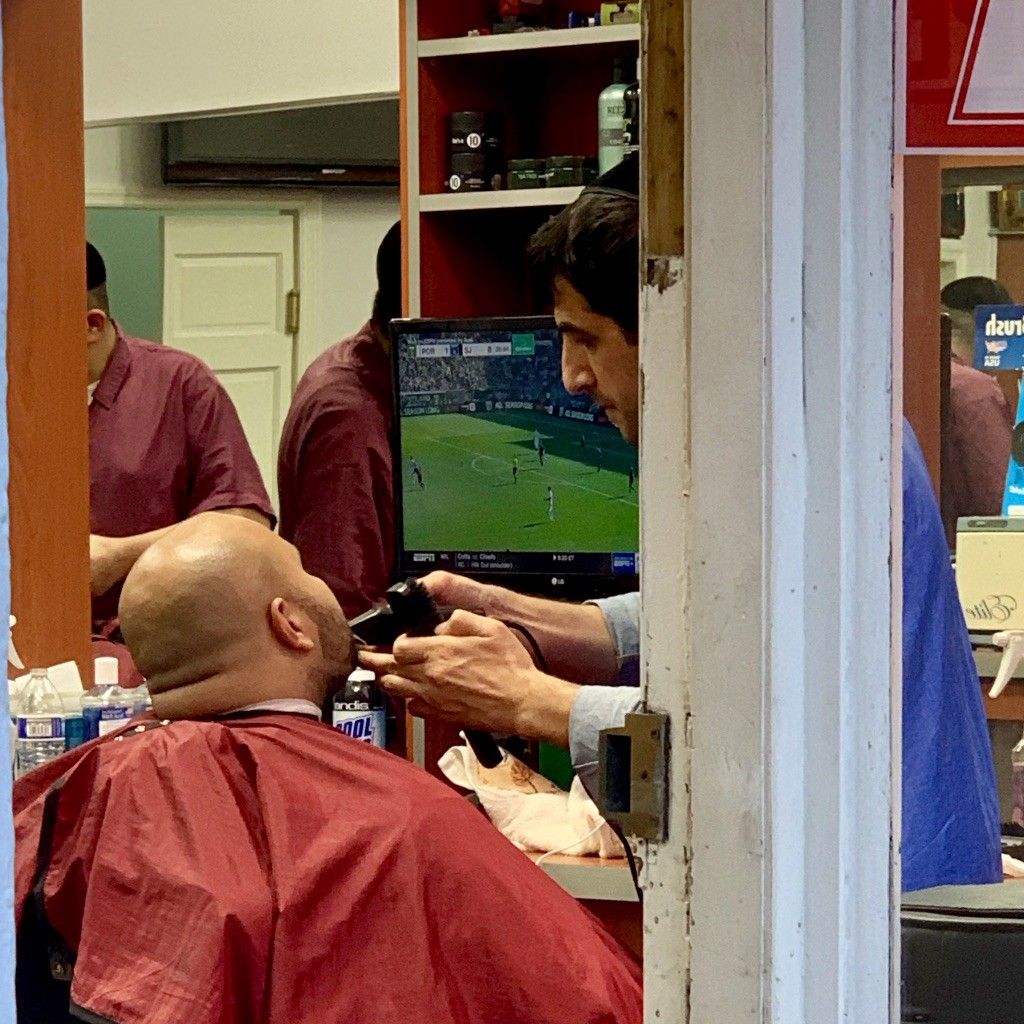
Scenes from Court Street in Cobble Hill, Brooklyn (Pre-Pandemic)
Place Maubert in Paris on the Left Bank, exhibits many of the best qualities of that neighborhood and serves as its town square. Fifteen years ago there was a street running through the center of the space, which has now been paved over to provide additional space for the market (four days a week) and adjacent stores and cafes. In addition to the 11 stores at the base of the building, there are many other cafes, restaurants, and shops, two news kiosks and a metro station. On Sunday there is a flea market in the market where you can unearth marvelous treasures.
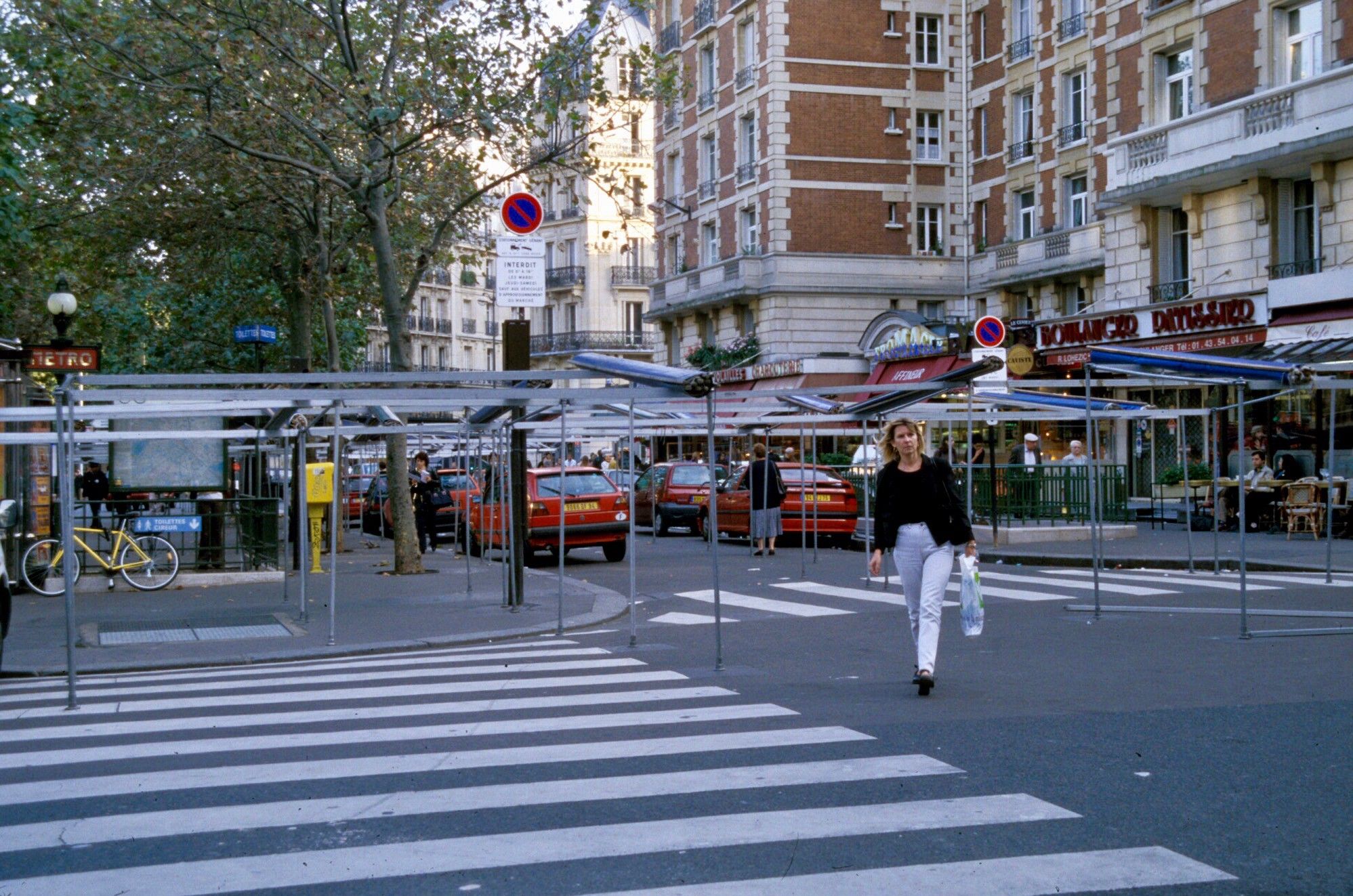
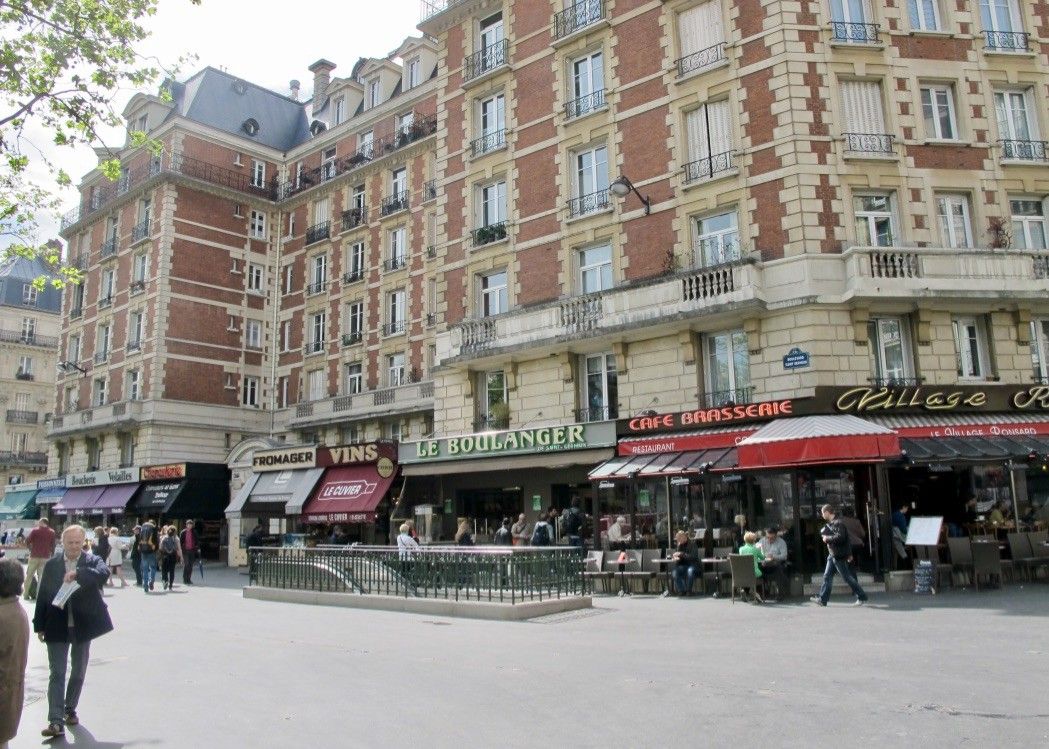
Fifteen years ago Place Maubert was overrun by parked cars (left). The parking lanes have been removed from the plaza and some of the surrounding streets have been narrowed, making more room for a market and pedestrian activity
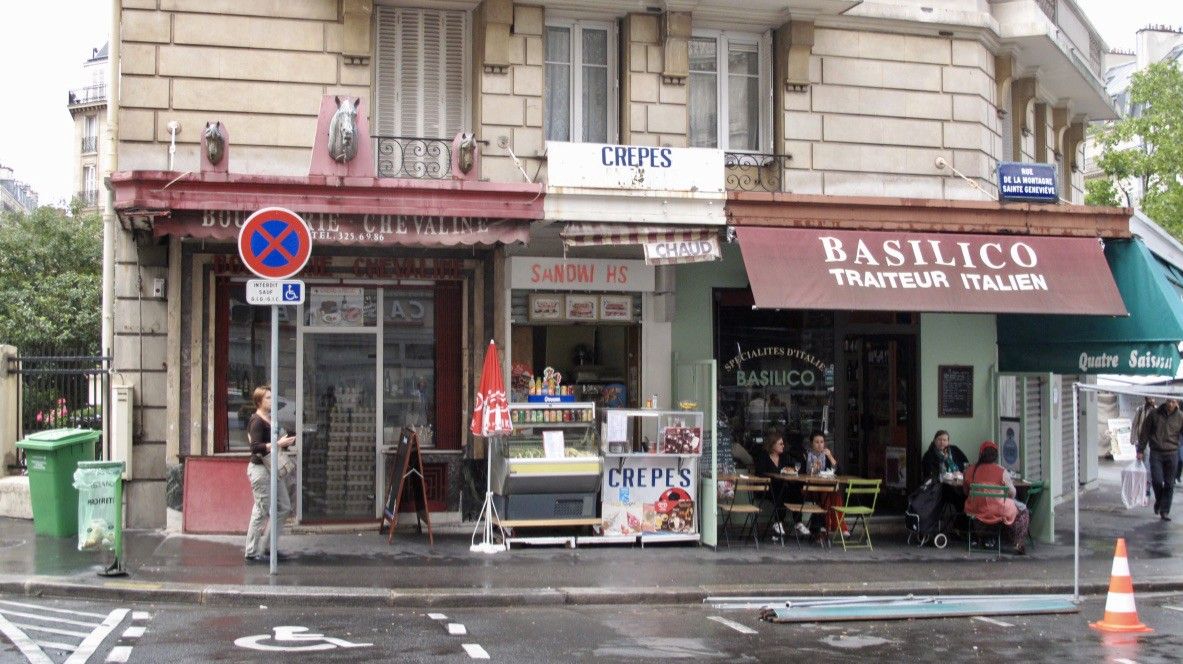
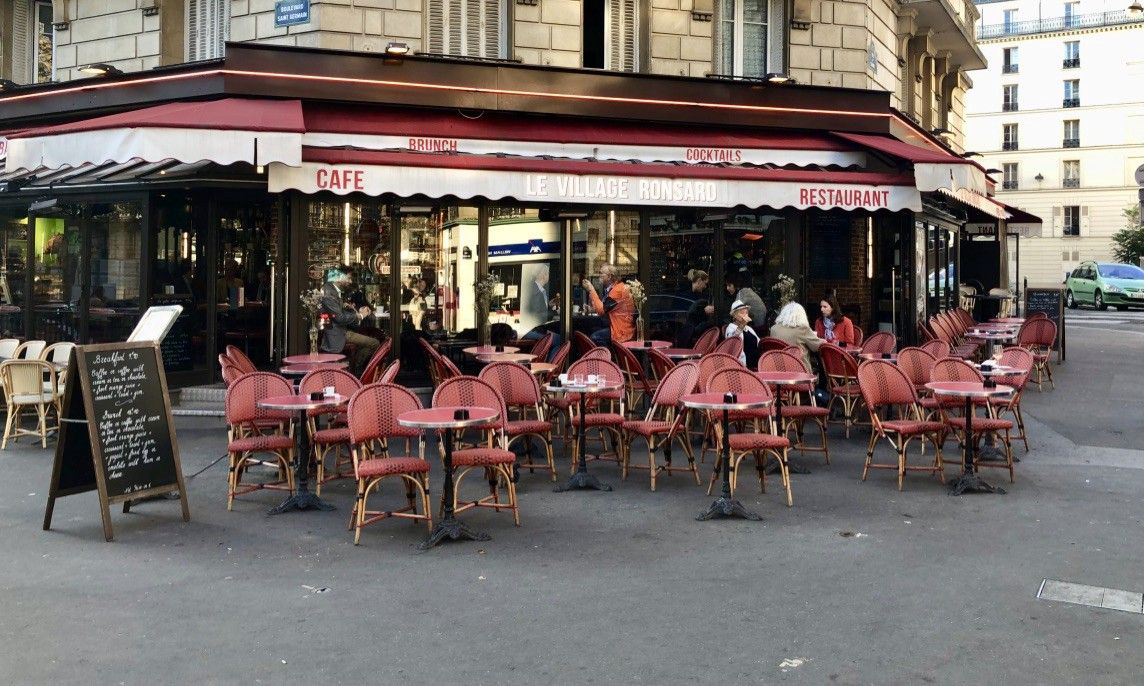
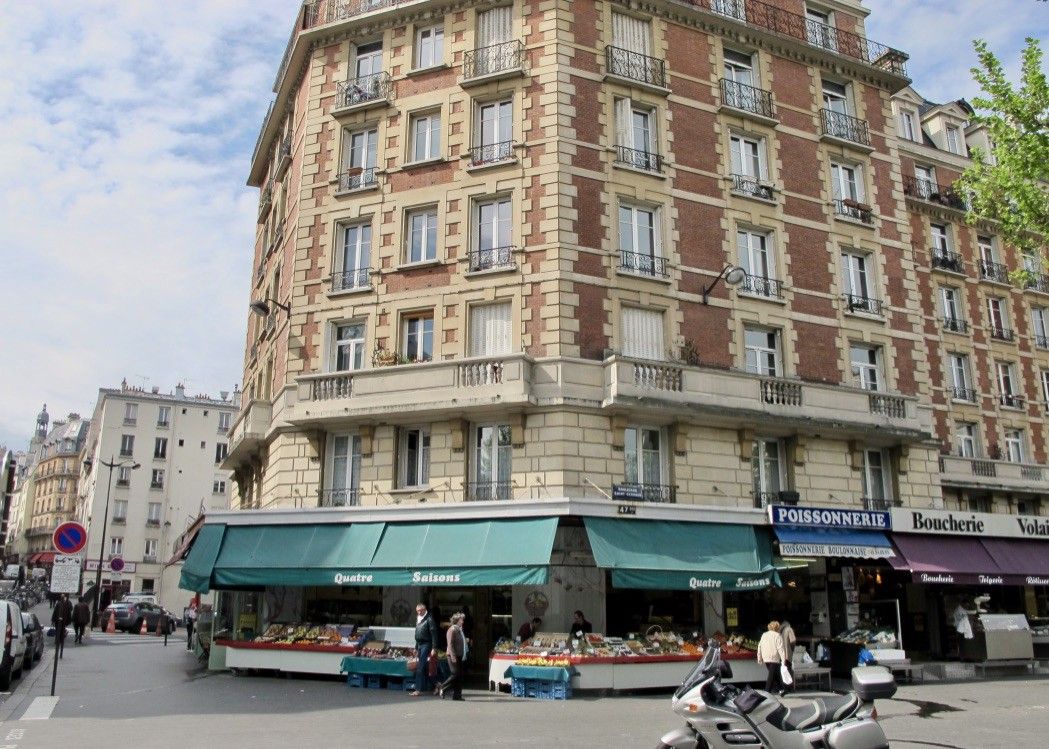
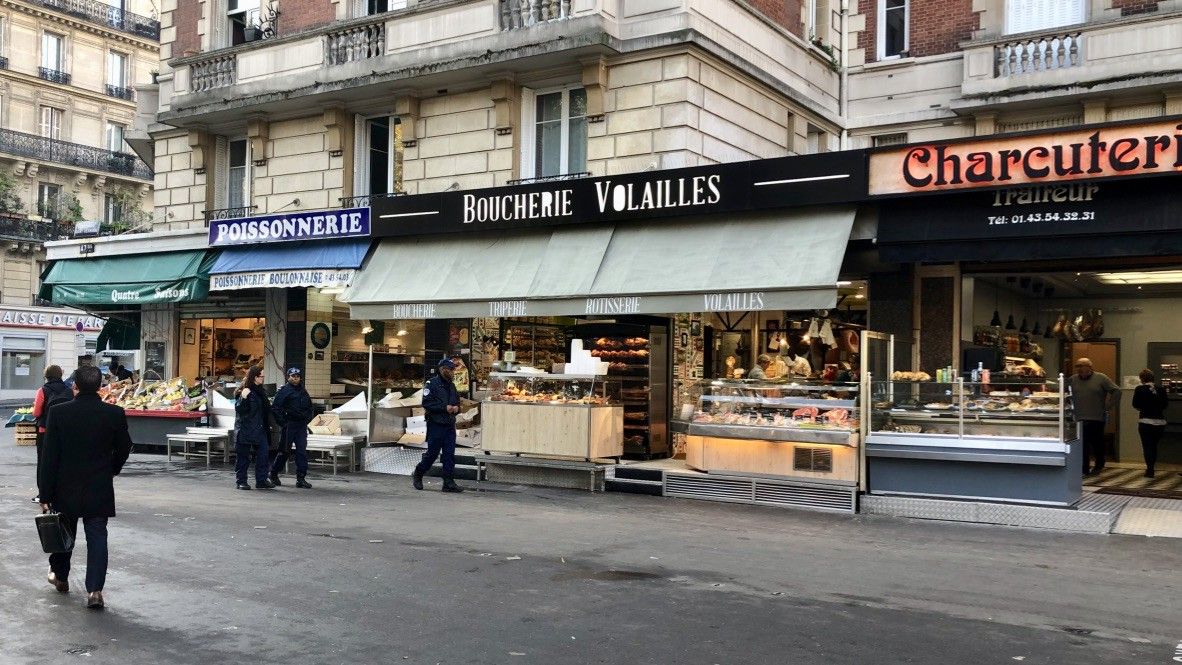
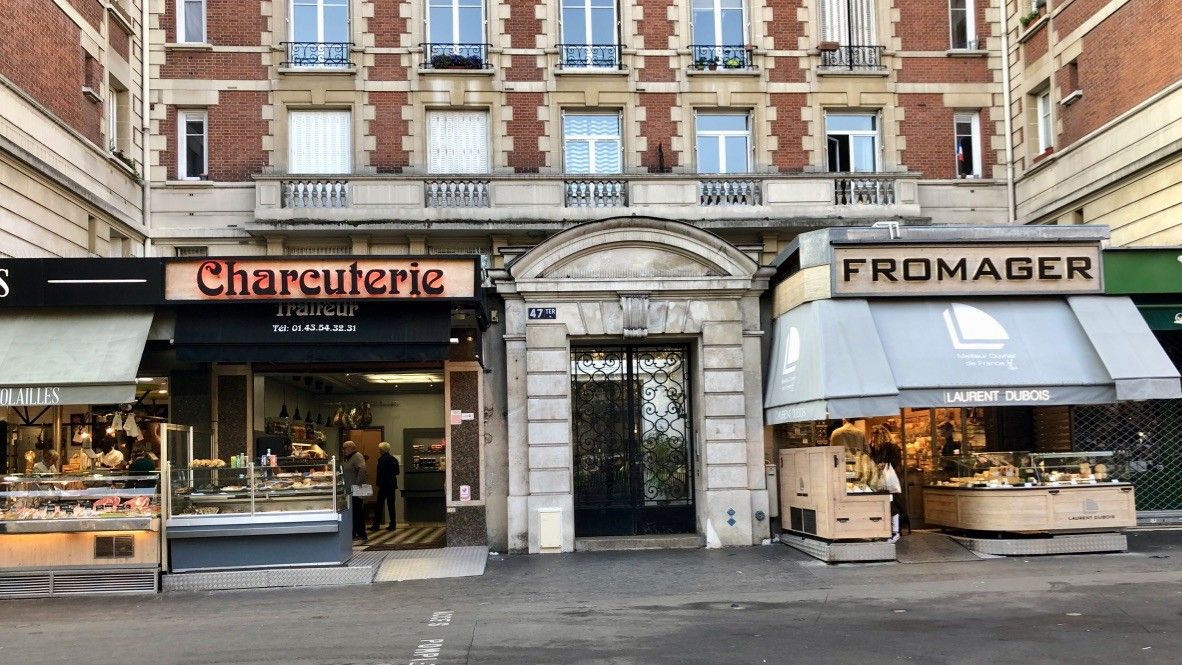
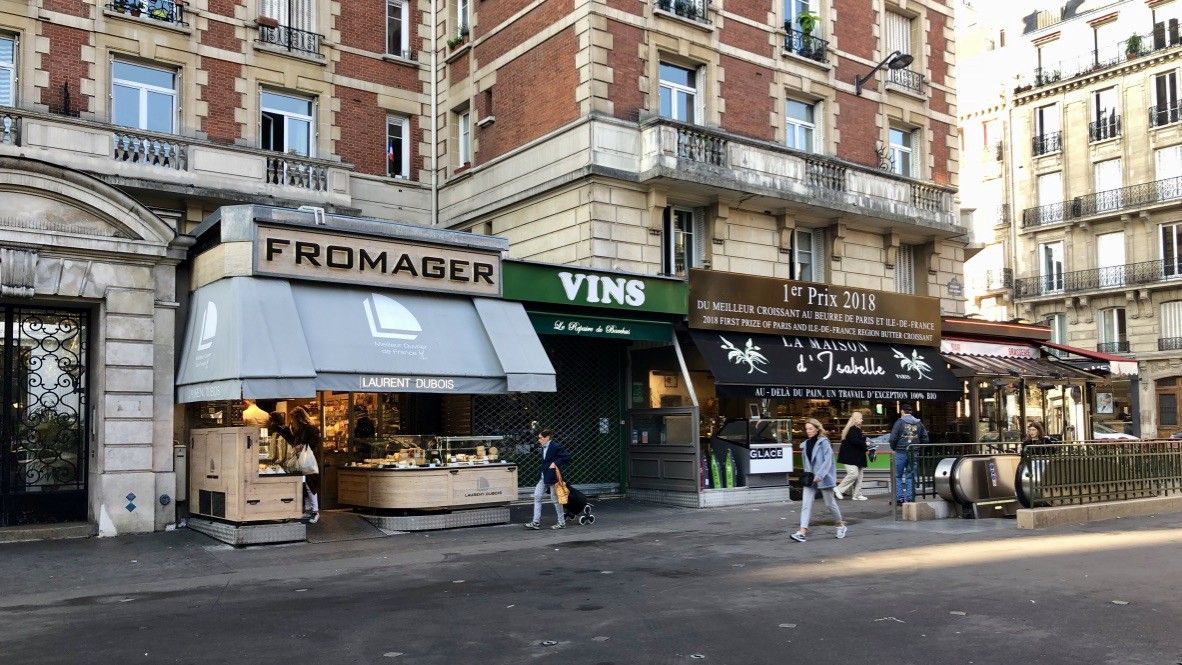
The Georgian Building (shown here from various angles) is a community hub with 11 local food purveyors and several small restaurants
Social Life in Action
From a distance, the Georgian Building on Place Maubert commands a strong presence. But its qualities really shine at the “eye level” — where shops extend out onto the former street space and local businesses encourage interactions between merchants and customers, which often flower into friendships.
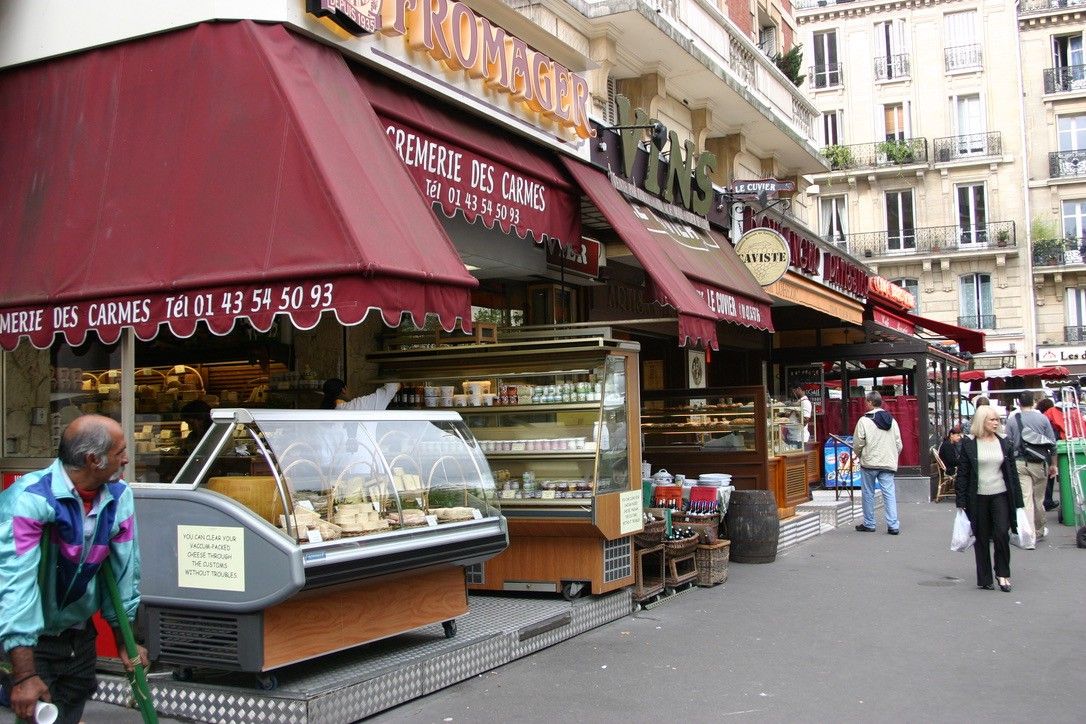

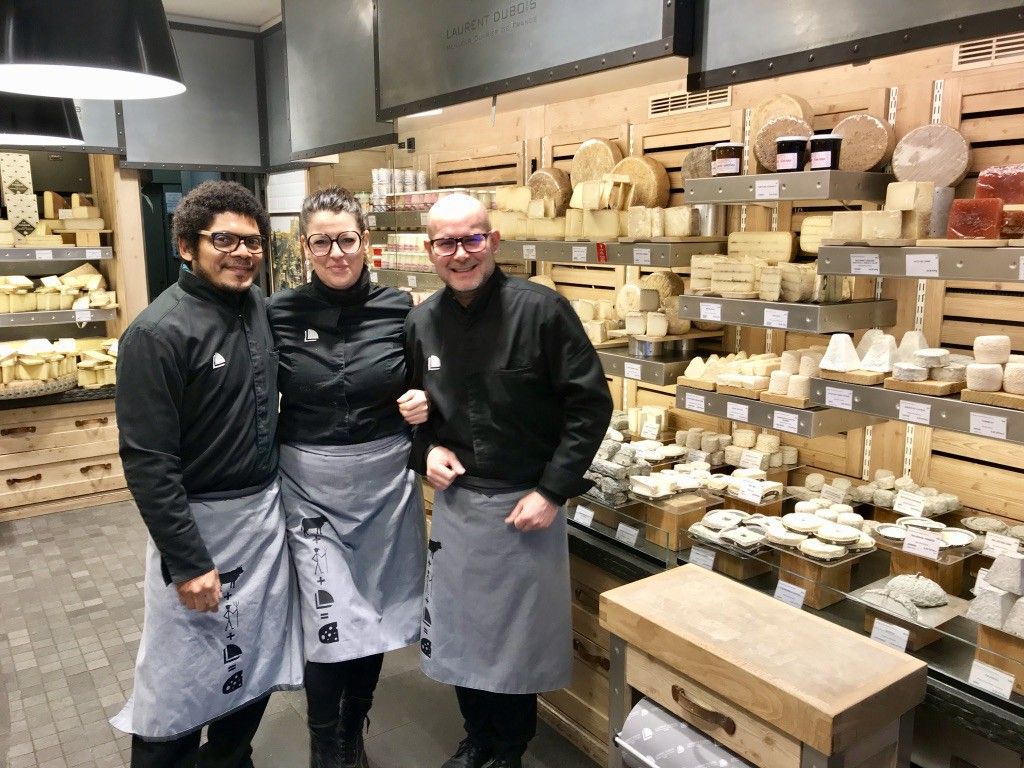
Local shopkeepers can help you choose the best ingredients for dinner, which makes shopping a pleasant social experience rather than a chore
The businesses and the market draw people from throughout the neighborhood and on Sundays the antique/flea market draws bigger crowds, making Place Maubert a citywide destination.
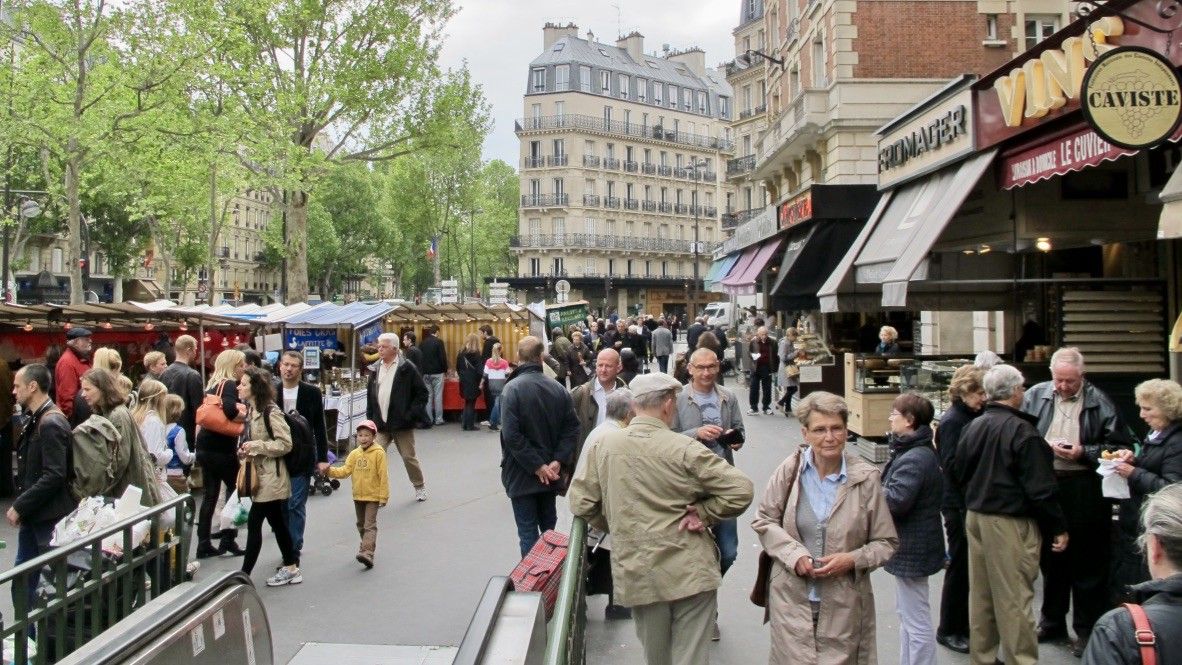
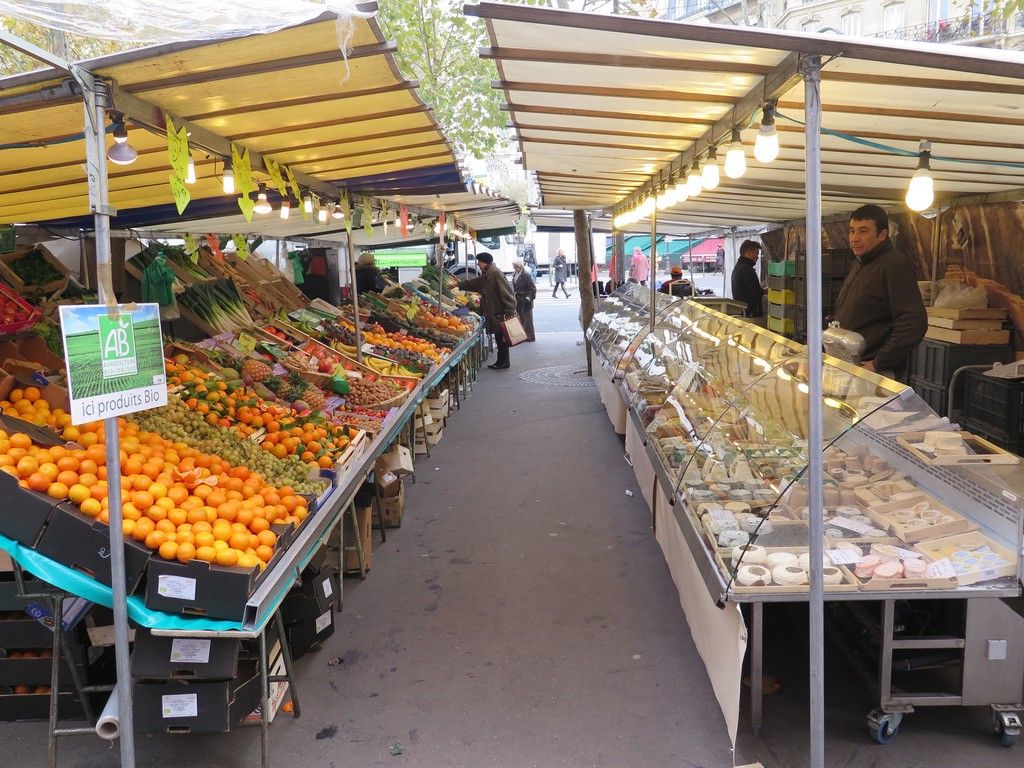
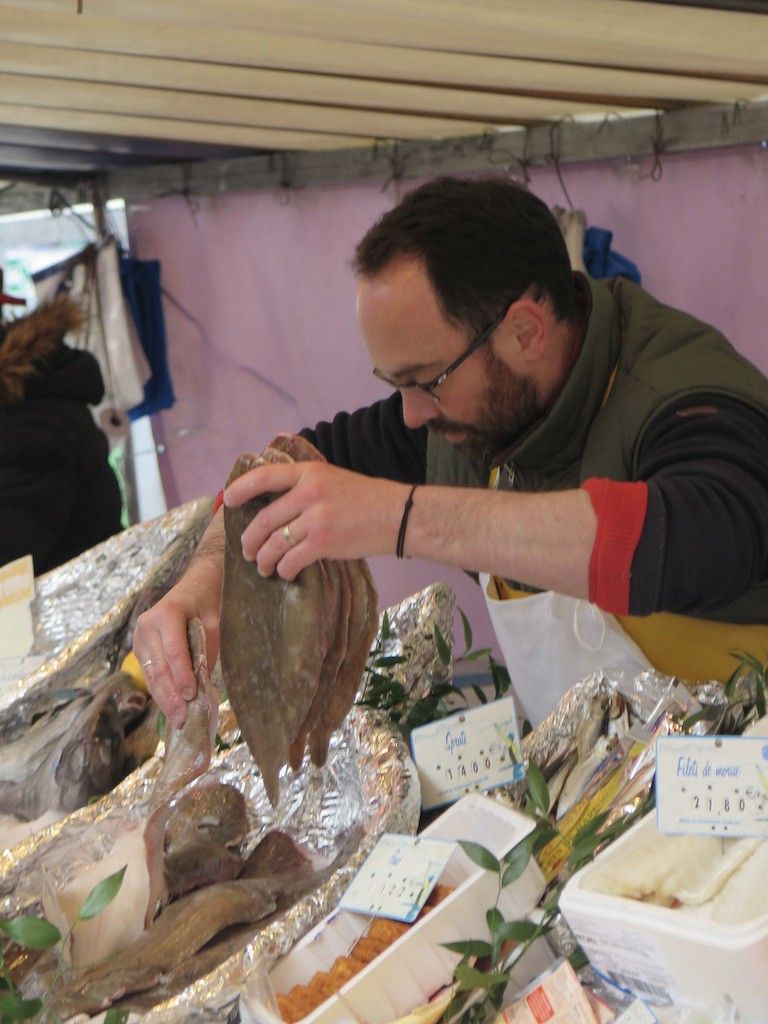
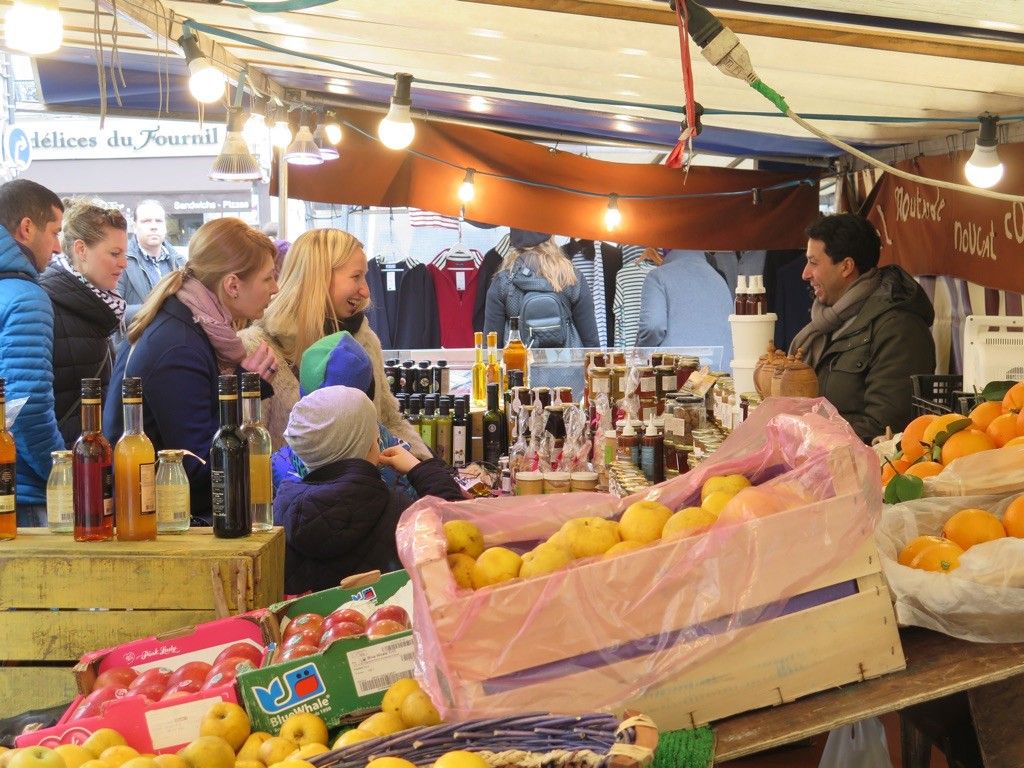

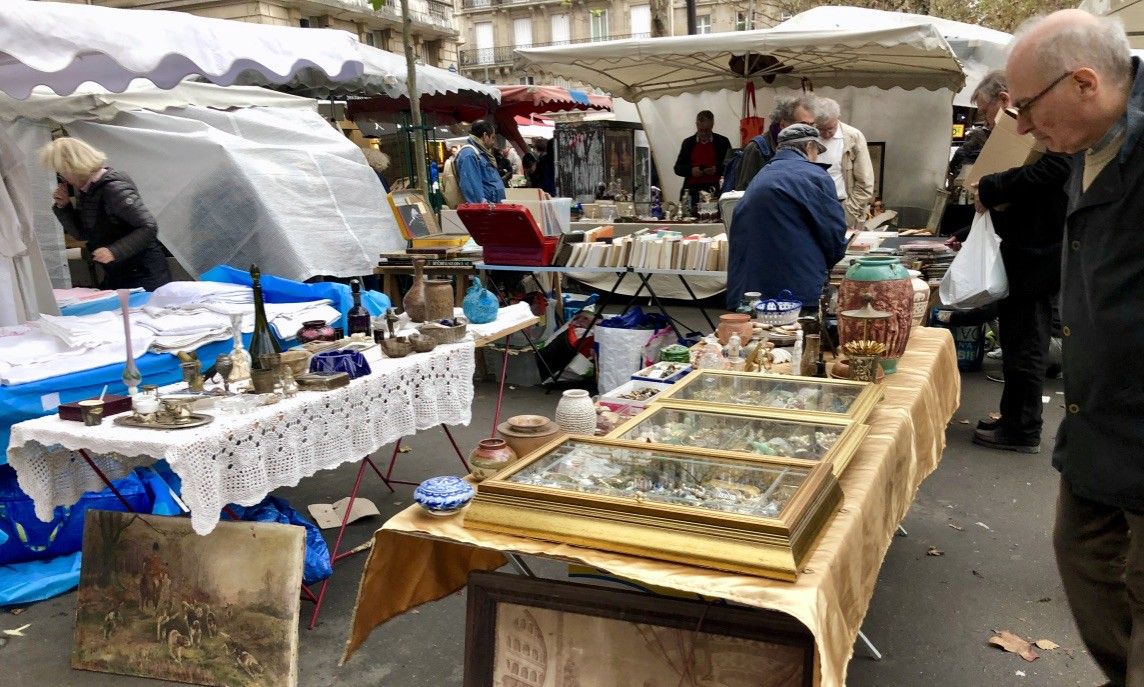
Vendors are knowledgeable about their products and enjoy talking about the origins of each item for sale. Friendly negotiation is a key part of the flea market experience, allowing you to get a better understanding of purchases and of the seller
Placemaking, Paris-Style
We all know that great cities are actually a collection of neighborhoods and public spaces. This gives them certain qualities that make people want to be there — for strolling, window shopping, people watching, eating, interacting with folks they know and ones they don’t. That’s why the key to vital cities is figuring out how to create places where people can easily connect with others, revealing something of themselves in the process.
The placemaking approach embraced by Paris accomplishes this by fostering active use of ground floor spaces and especially corners, which instill the streets with irresistible human activity. In addition, wide sidewalks allow for “double loading” of the pedestrian space which leaves room for seating, cafes, displays or kiosks. This creates the kind of places you want to visit daily. Instead of a duty, shopping becomes a pleasing ritual. Clerks, produce vendors, store owners and frequent customers become friends you look forward to seeing.
Within a three-to-five minute walk from Place Maubert are a number of intersections and other sociable spots that show how to bring a street to life.
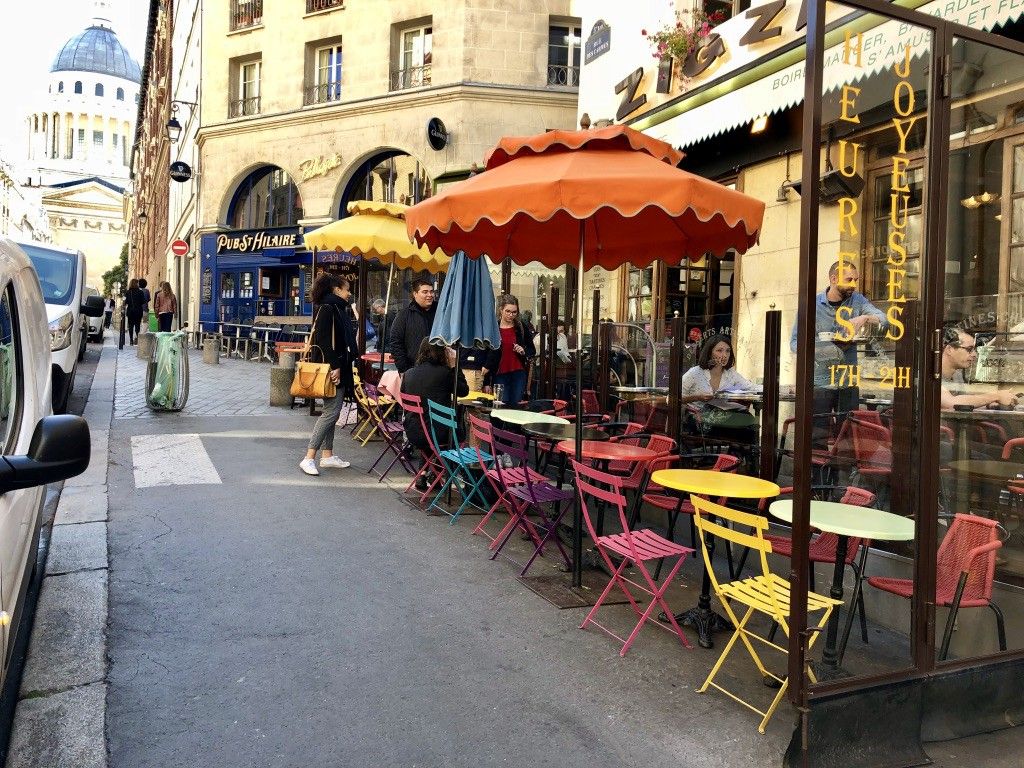
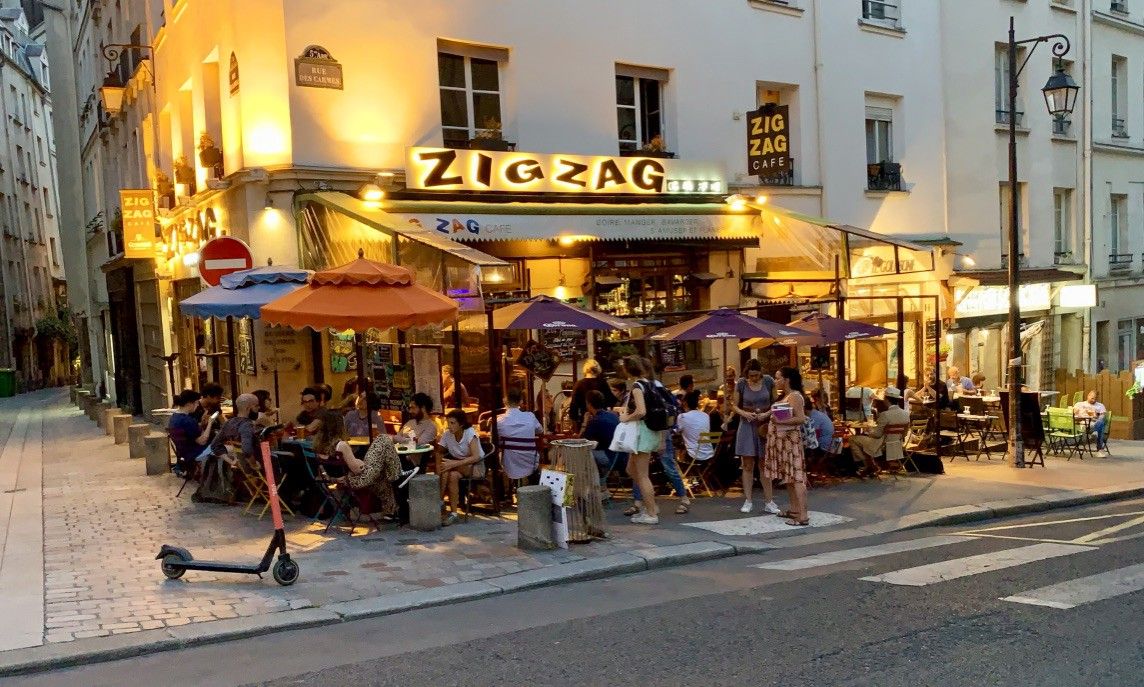
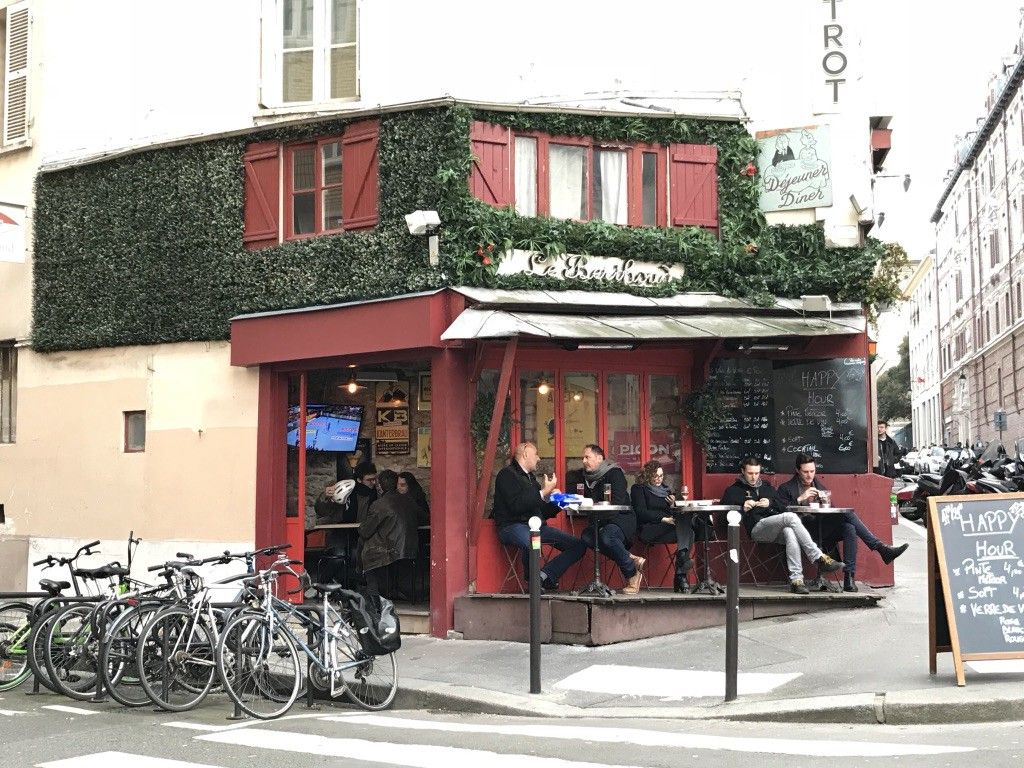
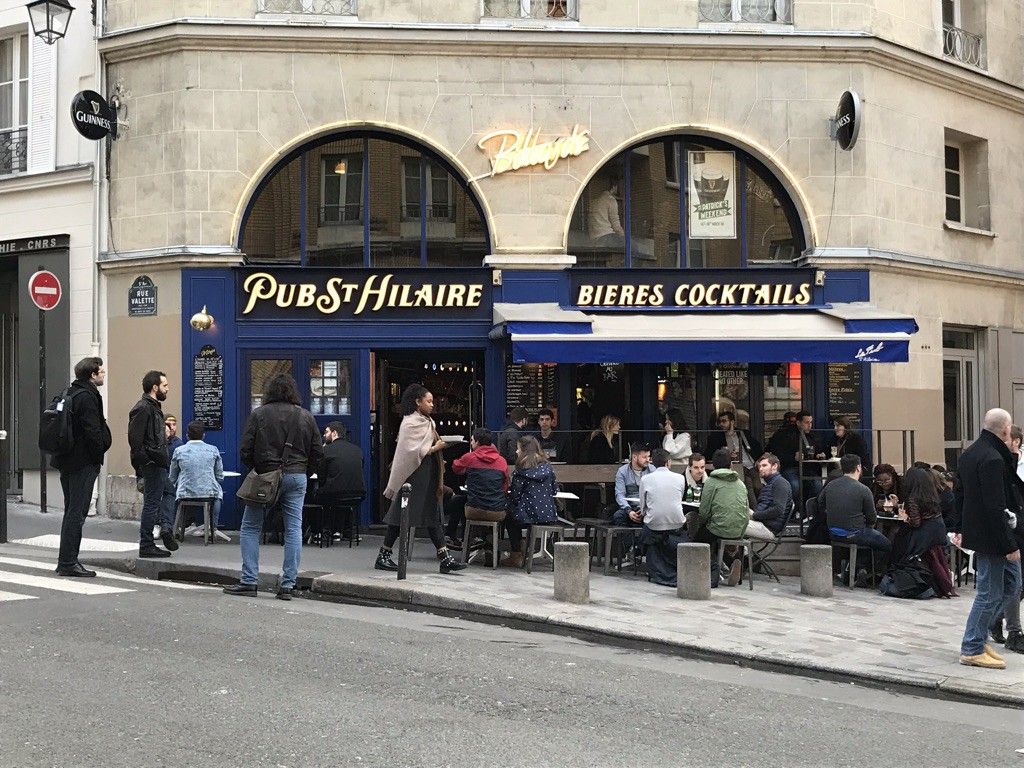
Paris understands the crucial role street corners that play in activating the social life of an urban neighborhood. This intersection on the hill going up to the Pantheon is visible all the way from Place Maubert, creating a passageway between the two places dotted with spots to stop. The corner stands out for the the interplay between three very different types of restaurants
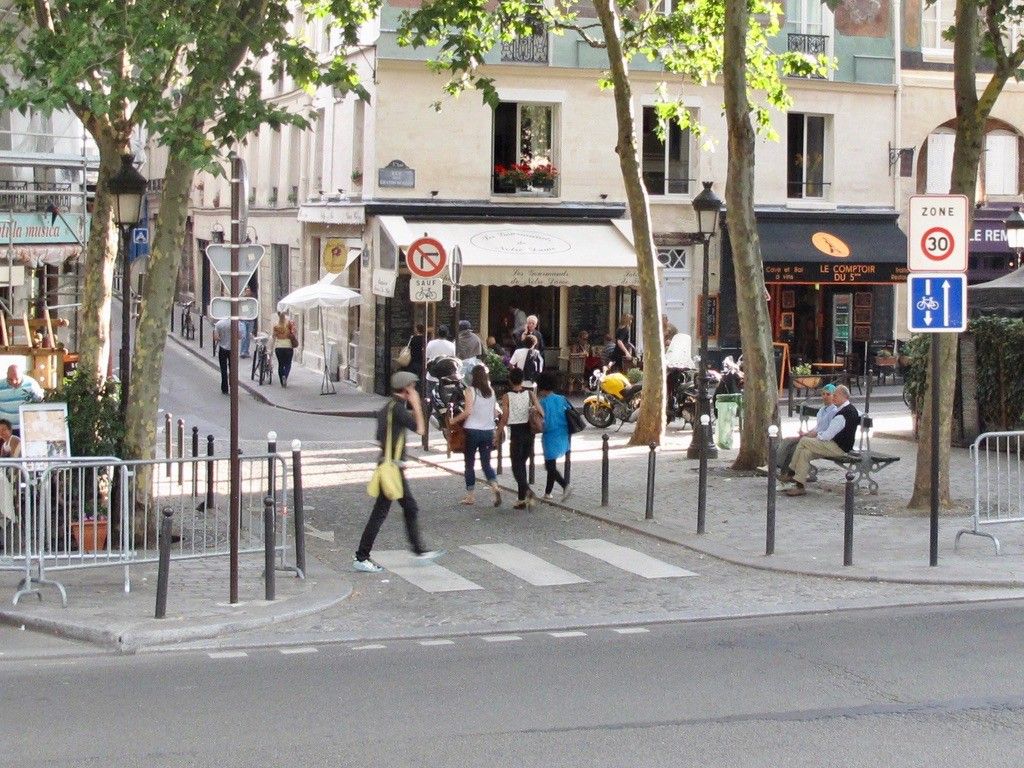
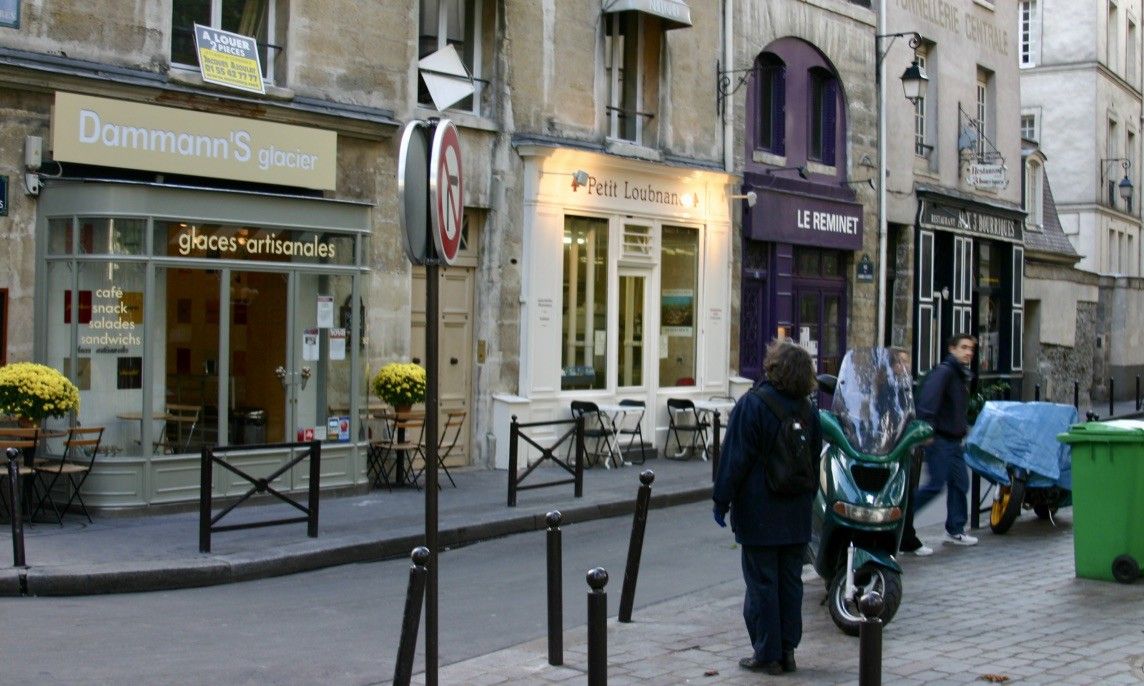
This small plaza across the Seine from Notre Dame Cathedral is just few blocks from Place Maubert and offers seven small restaurants catering to all kinds of diners, from neighborhood regulars to foreign tourists
Paris is rich with striking examples of how restaurants enliven street corners by literally pulling you in with warm lighting, indoor and outdoor cafe tables, and windows that make you feel you are already inside the door.
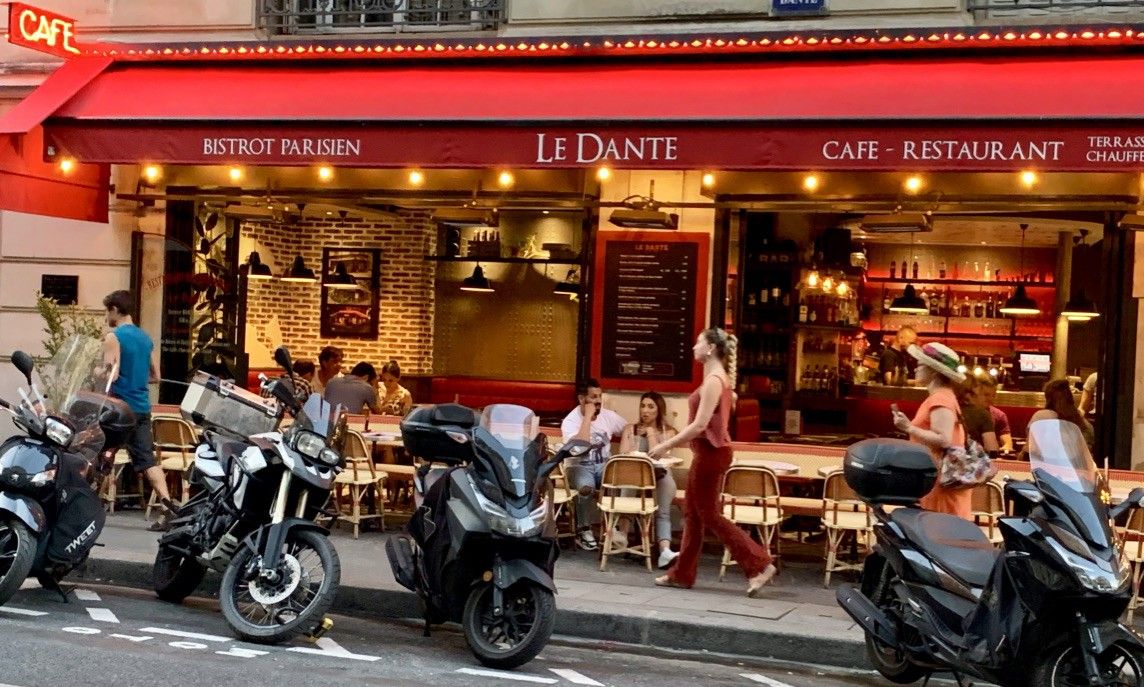
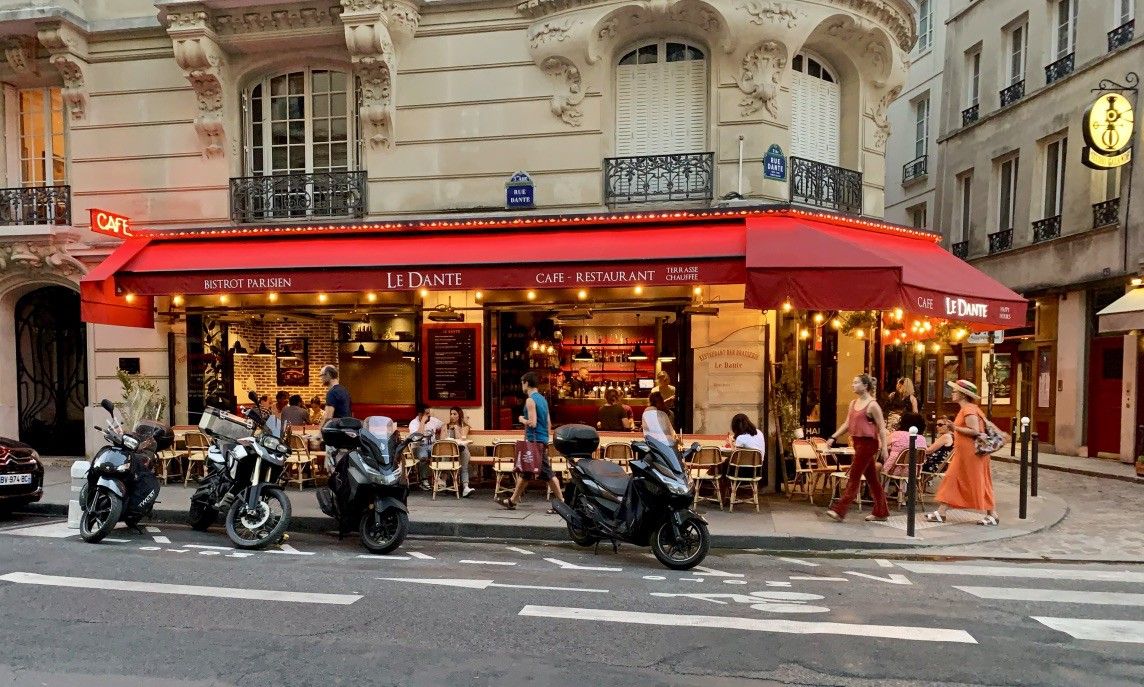
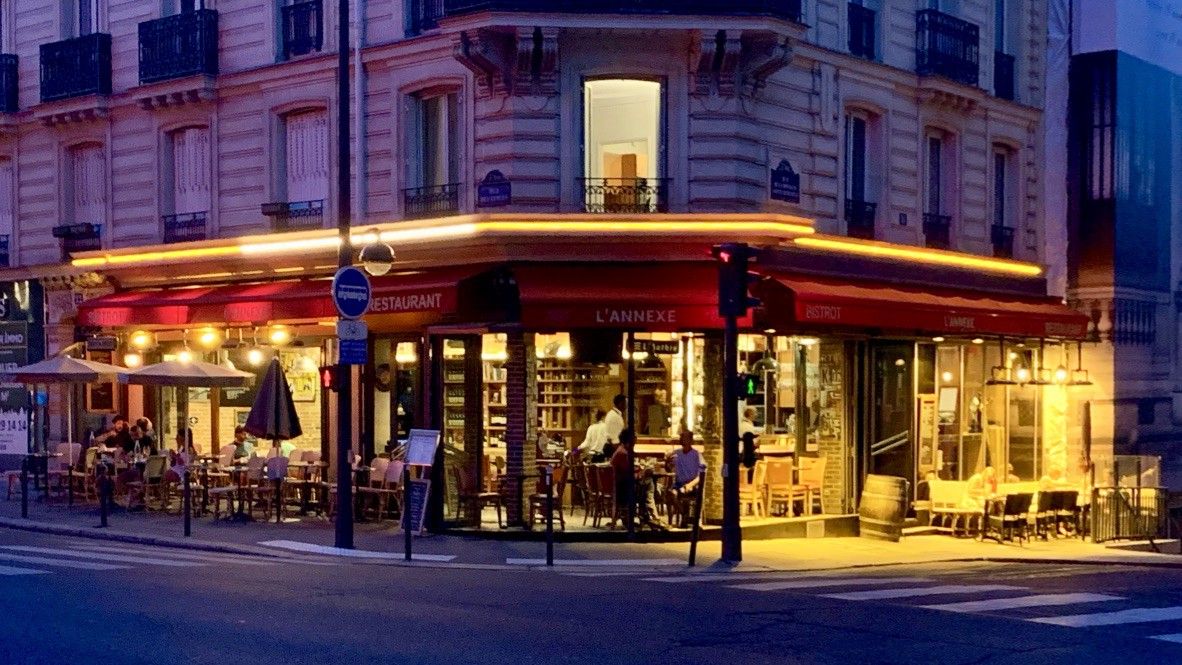
Many Parisian restaurants open up to the street on corners, expanding public space and enlivening the atmosphere of entire blocks. These two cafes creatively compete for attention, establishing a welcoming feel that boosts business at adjacent stores
Cobble Hill and Carroll Gardens— Where Change is a Double-Edged Sword
In the decades we’ve lived there, Cobble Hill has evolved from a primarily working-class enclave to a hot spot for professionals. These changes have brought a wider variety of shopping and entertainment offerings into our backyard, but also drove a lot of new development—much of which is destroying the human-scale feel and local character of the area.
An unmistakable symbol of these changes are real estate offices popping up along the streets like mosquito bites. Instead of window displays, their storefronts are plastered with condo and brownstone listings that reinforce a message that the neighborhood is more of a shrewd speculative investment than a nice place to live.
In many cases these offices drive out revered neighborhood institutions (e.g book stores, pharmacies and local restaurants) which cannot generate as much income per square foot. One exception is the Foster Building on Court Street, whose owners clearly understand that stimulating street life works to the advantage of the entire neighborhood. But unfortunately, this isolated island of urban energy is not reciprocated on adjacent blocks. Adopting placemaking strategies similar to Paris would spark a renaissance of sociability that Cobble Hill and Carroll Garden needs.
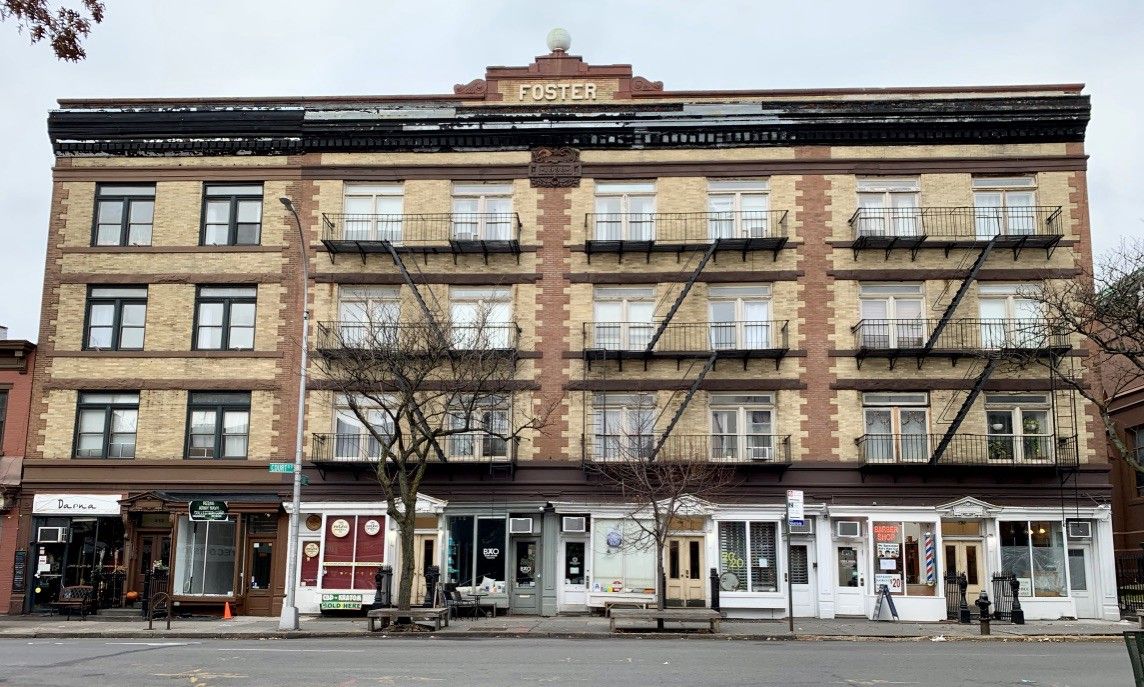
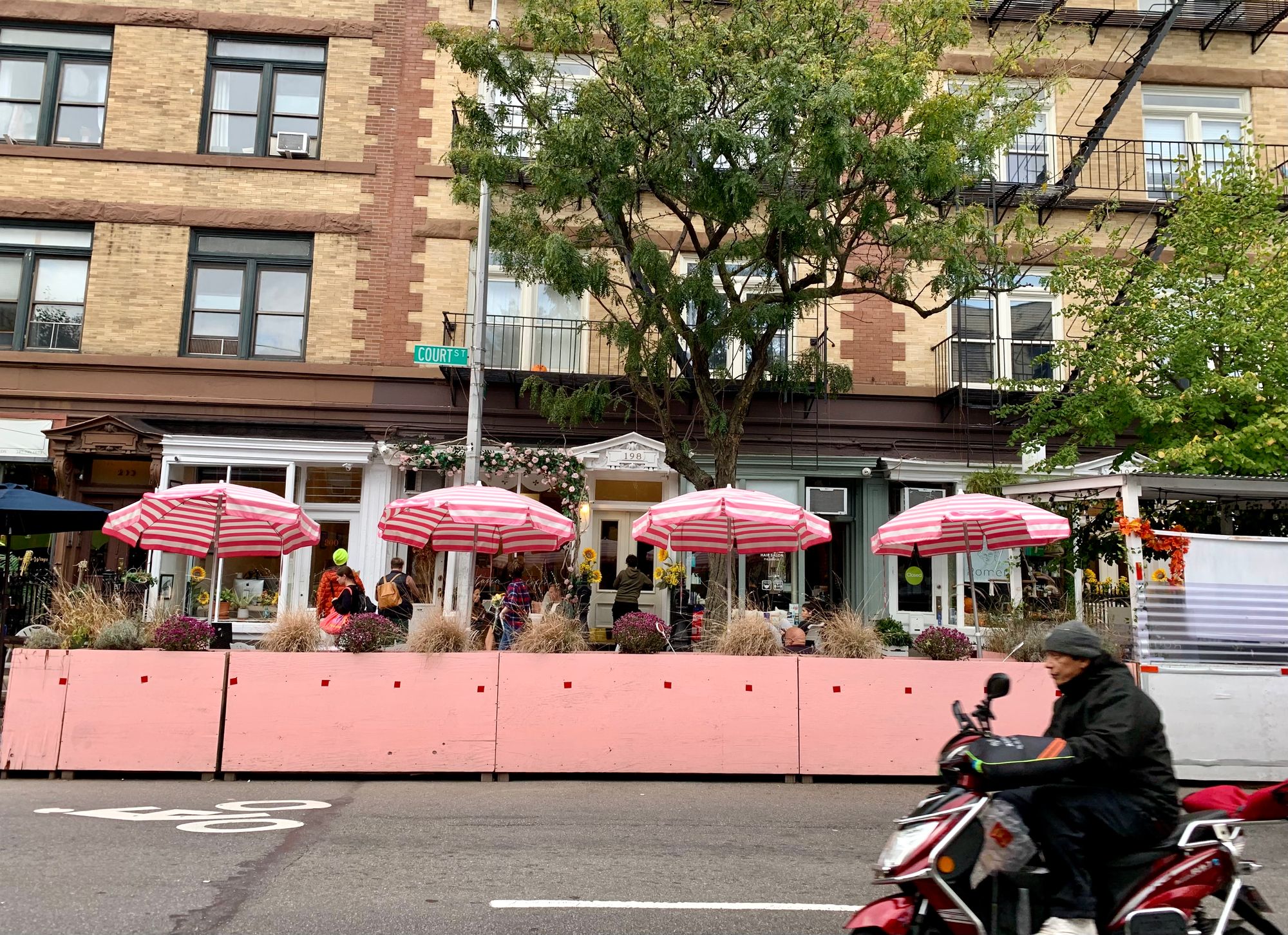
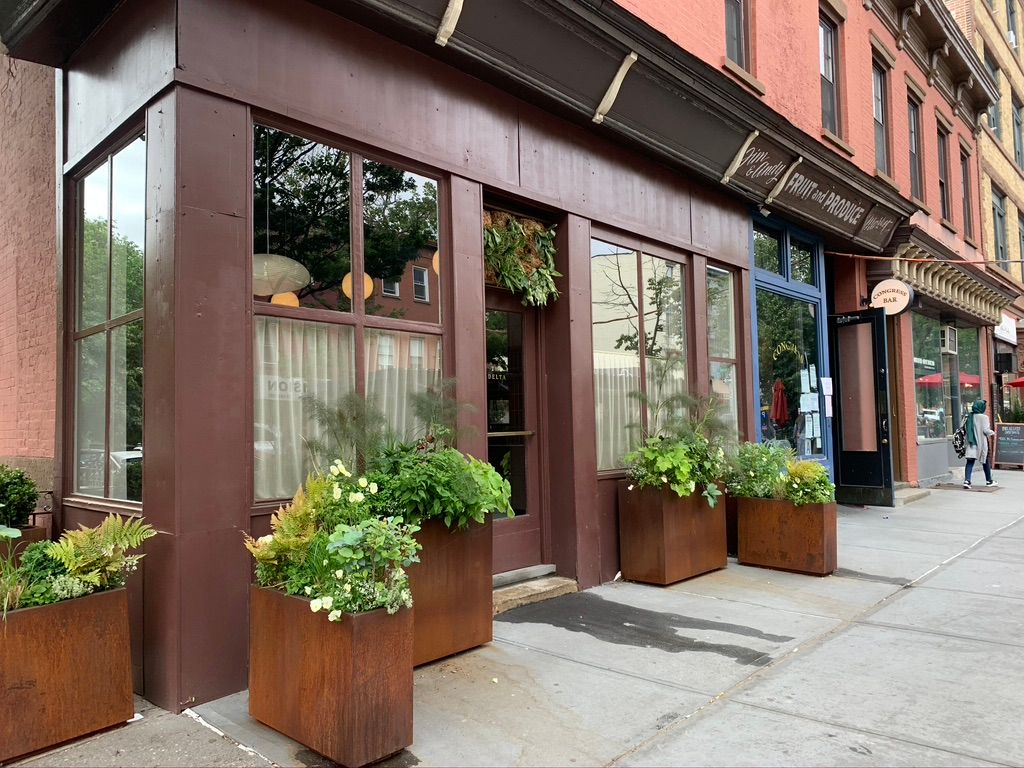
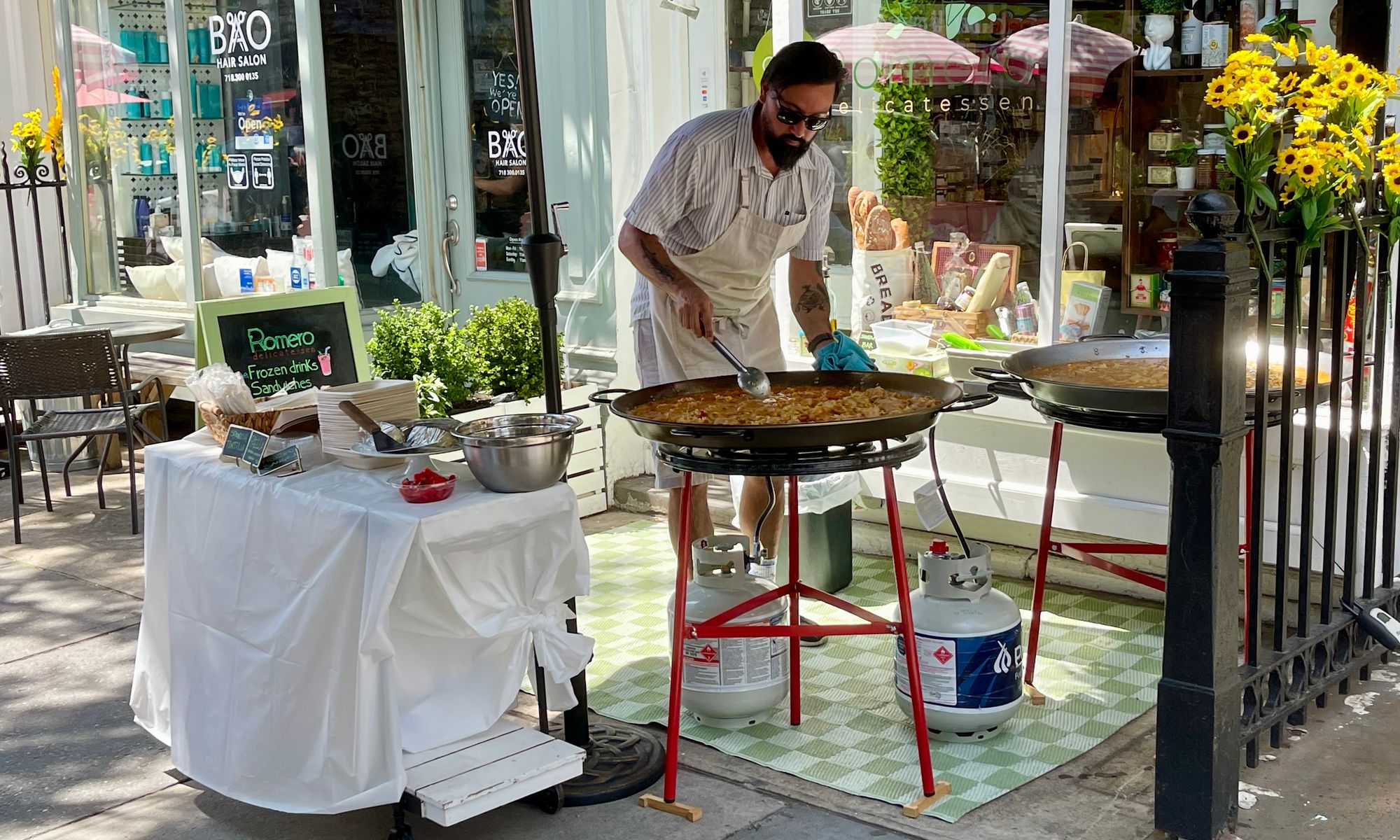
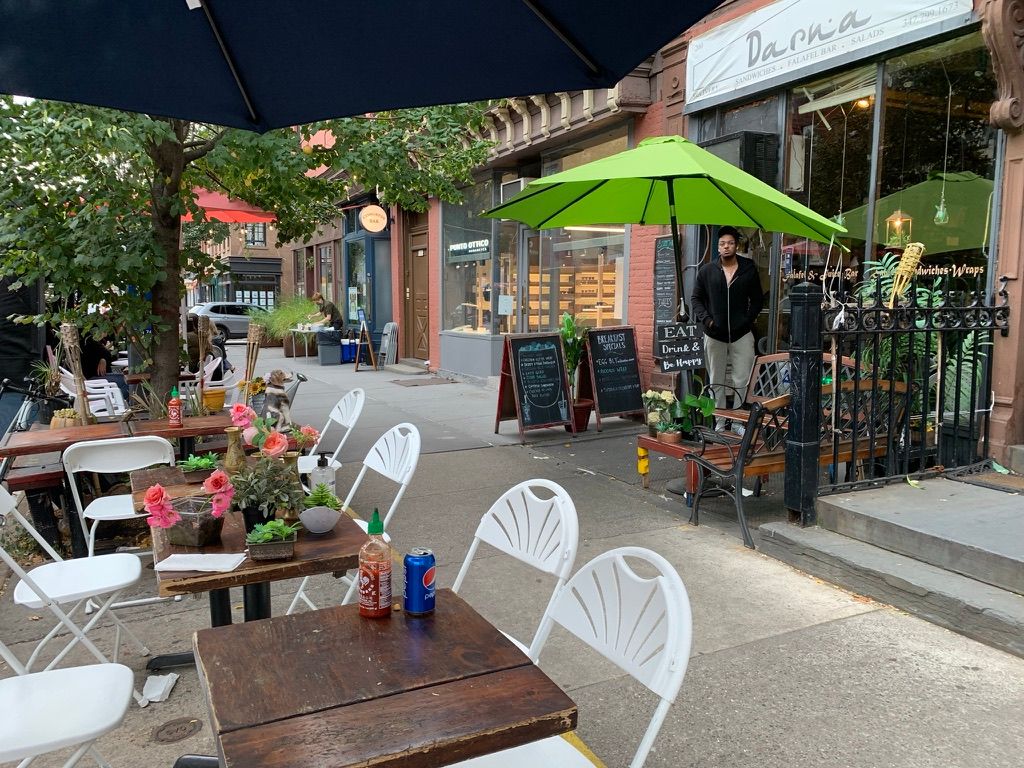
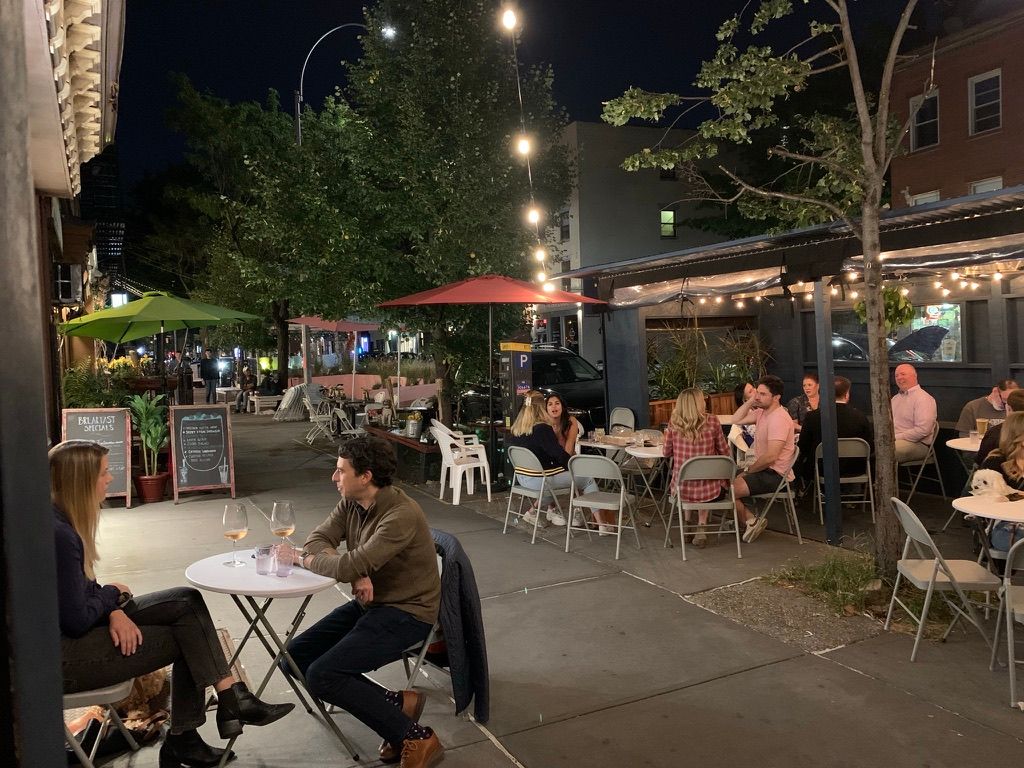
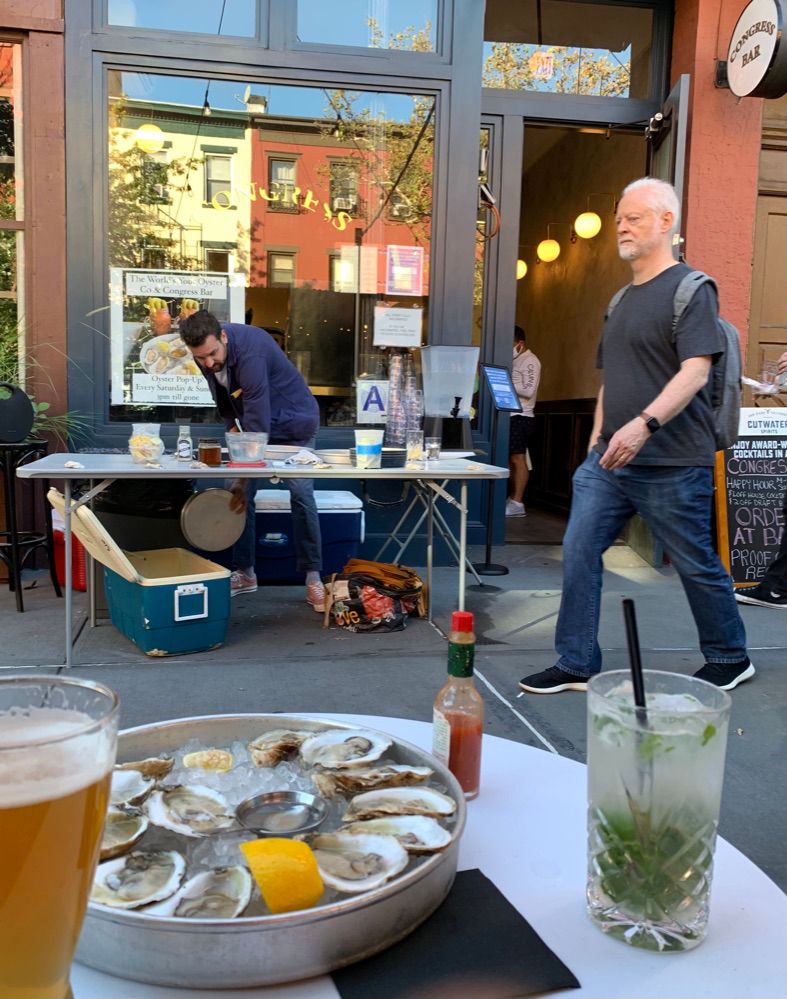
Before:
In-between seating down Court Street consists of a few built-in benches surrounding trees.

After:
Additional benches, planters and a mix of eclectic seating options have been added.
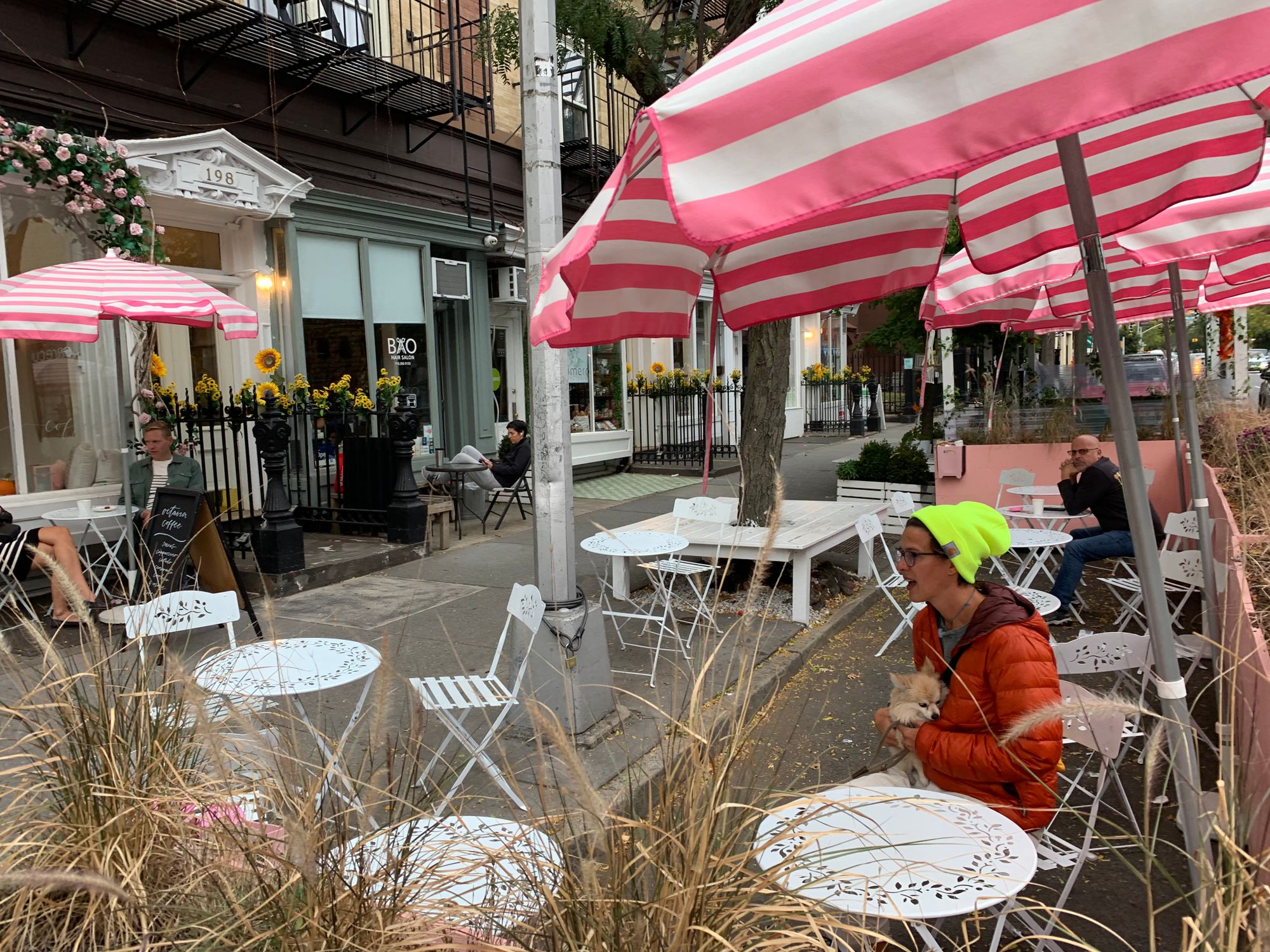
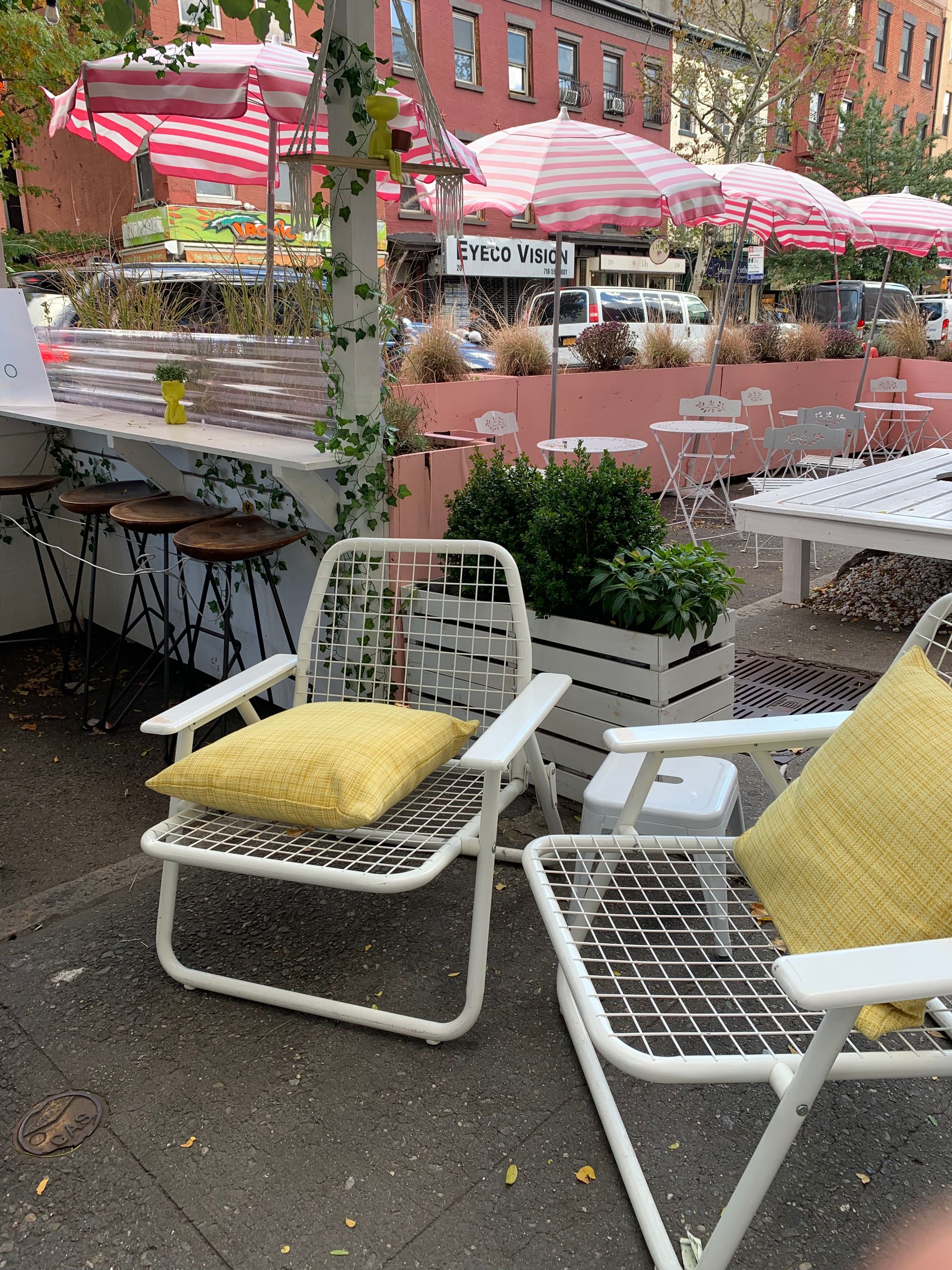
This block of Court Street housing the Foster Building is close to perfect. The storefronts are small, which cater to locally-owned businesses that serve local needs — including an ice cream shop and barber shop as well as stores and restaurants. The storefronts and seating work together to provide a pleasant place to linger — which attracts customers to the businesses as well as establishing the kind of social setting every neighborhood needs.
How is Brooklyn Failing?
While Paris maintains a reverence for open, engaging storefronts and strong community hubs, many New York neighborhoods are losing the human scale and local character that once was the city’s hallmark. New developments ignore the enduring social and design patterns which made New York’s neighborhoods so special in the first place.
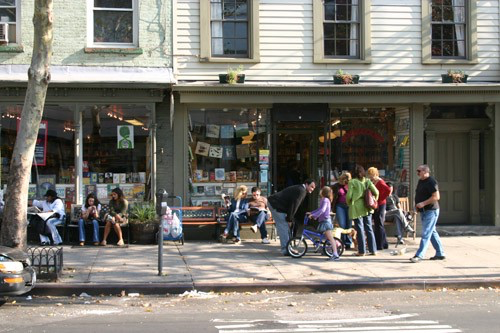
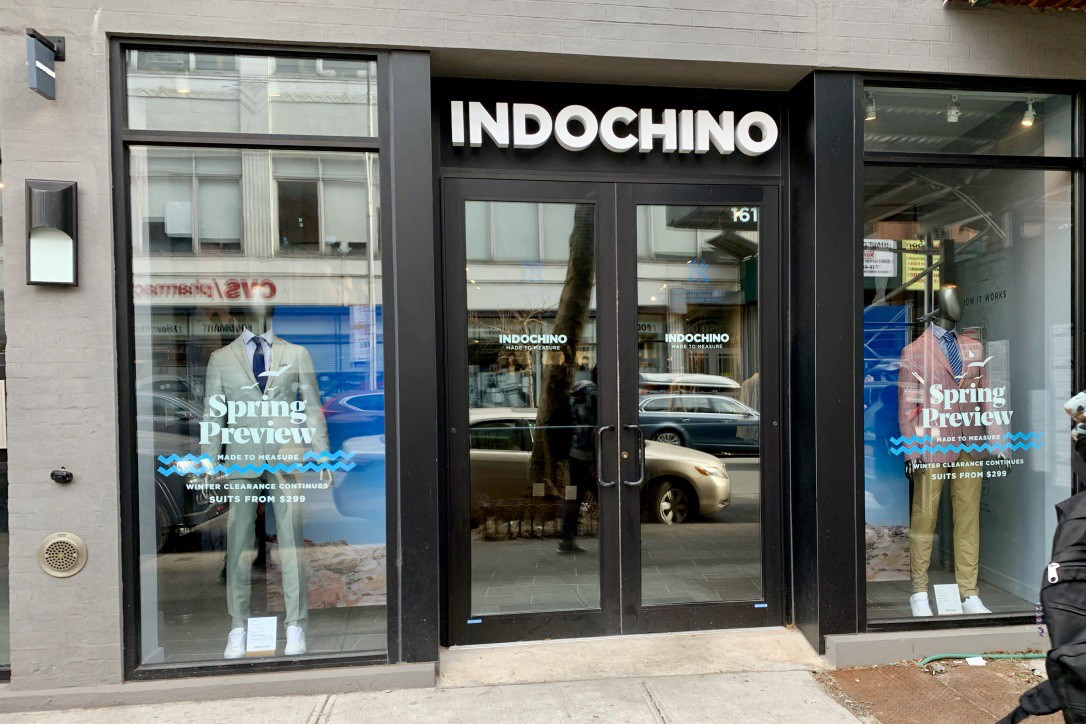
The biggest wake-up call for the Cobble Hill neighborhood was the loss of two book stores. They did more than sell books, they were gathering places that brought people together and ignited important community discussions. The bookstore on the left was replaced by the chain clothing boutique on the right
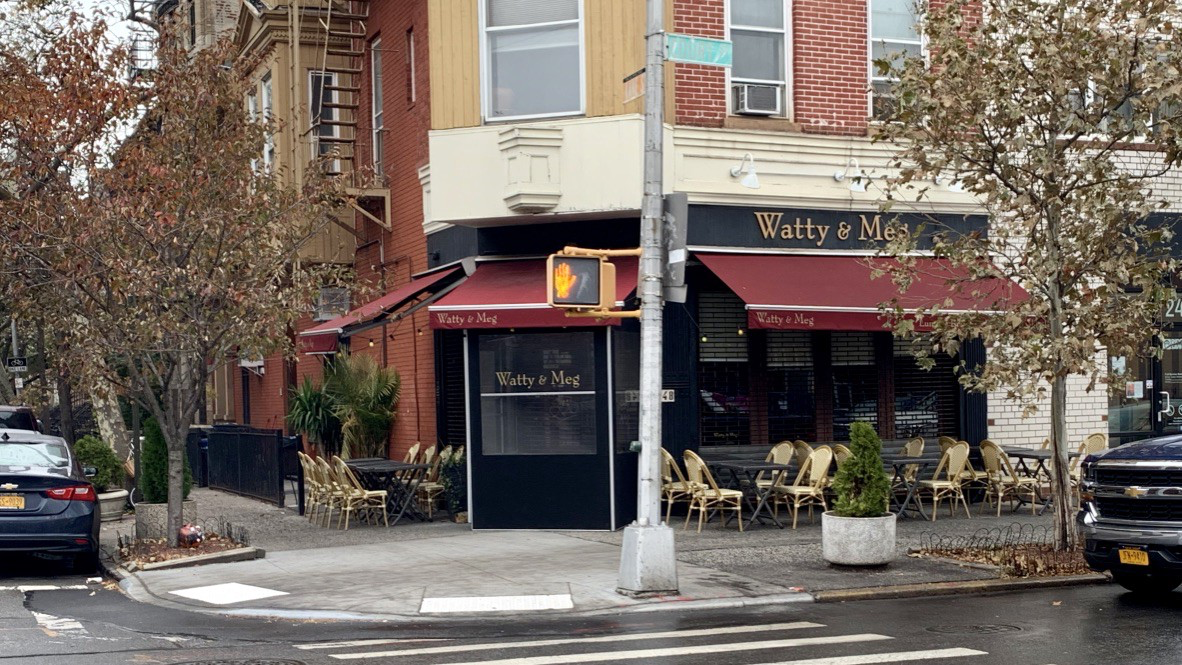
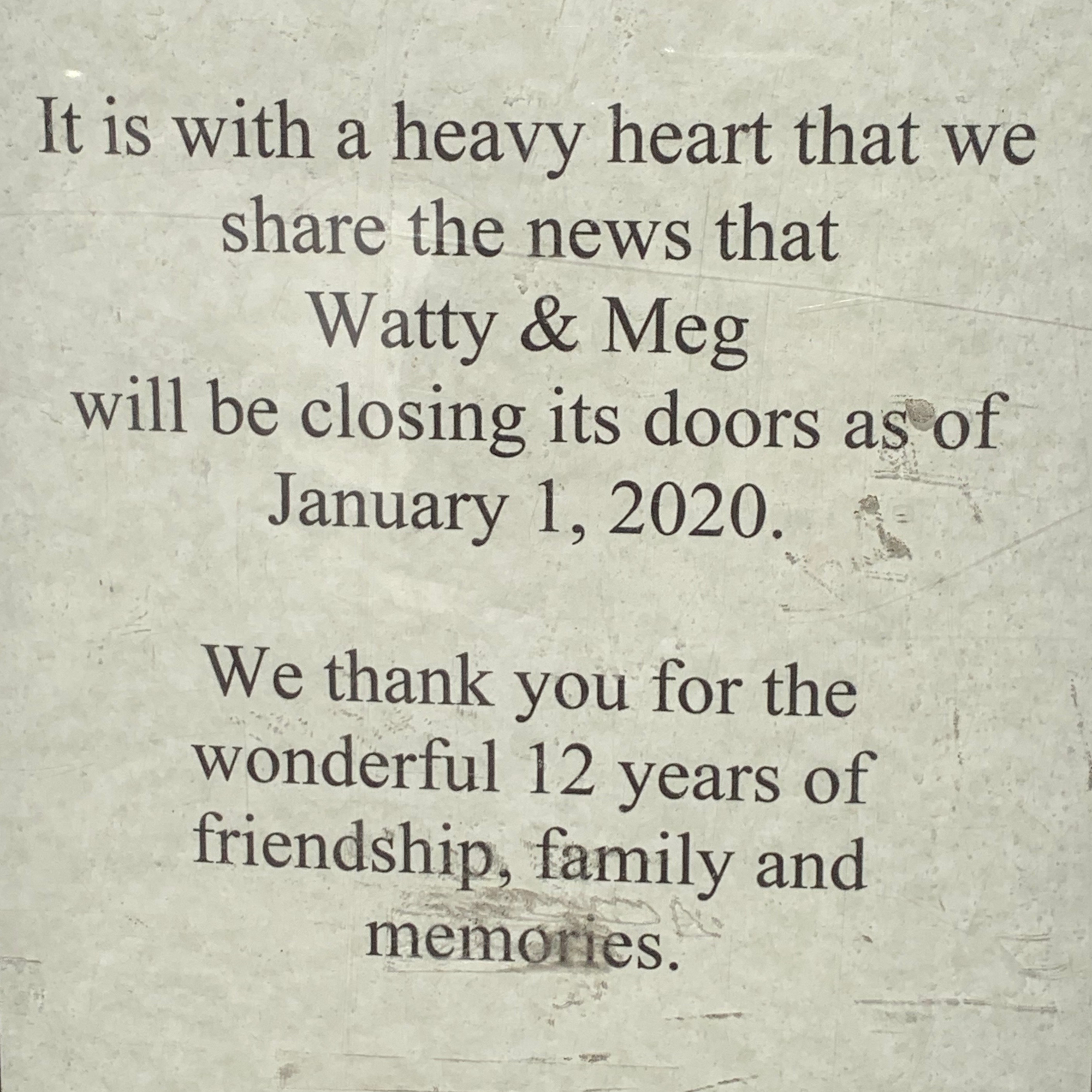
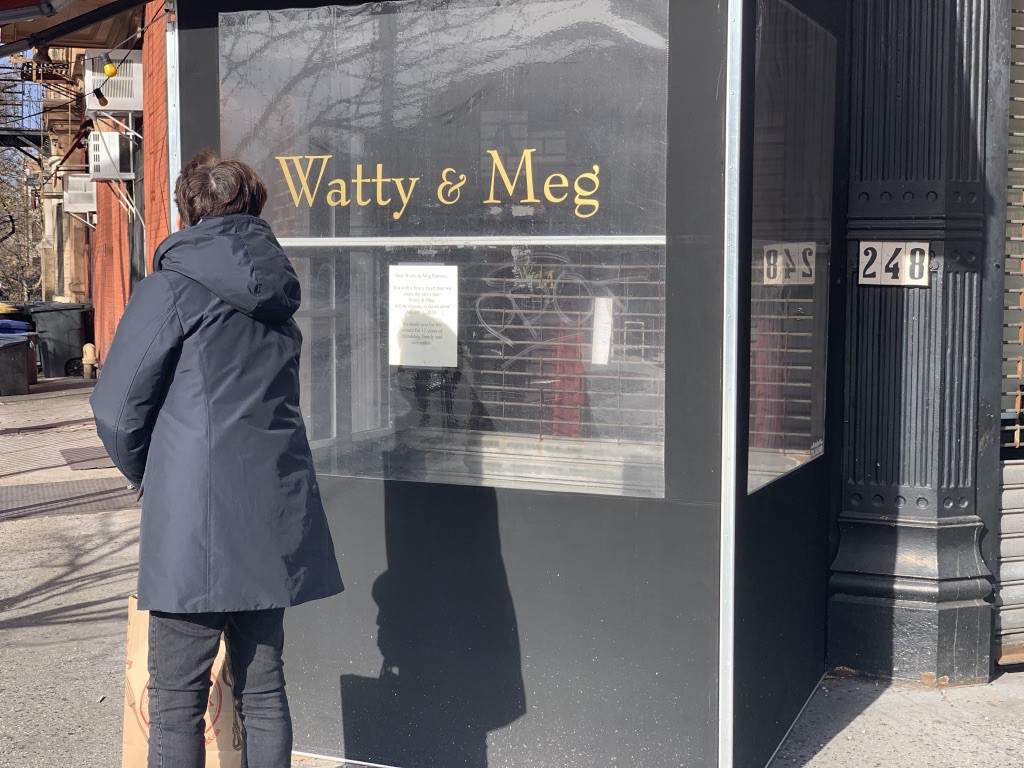
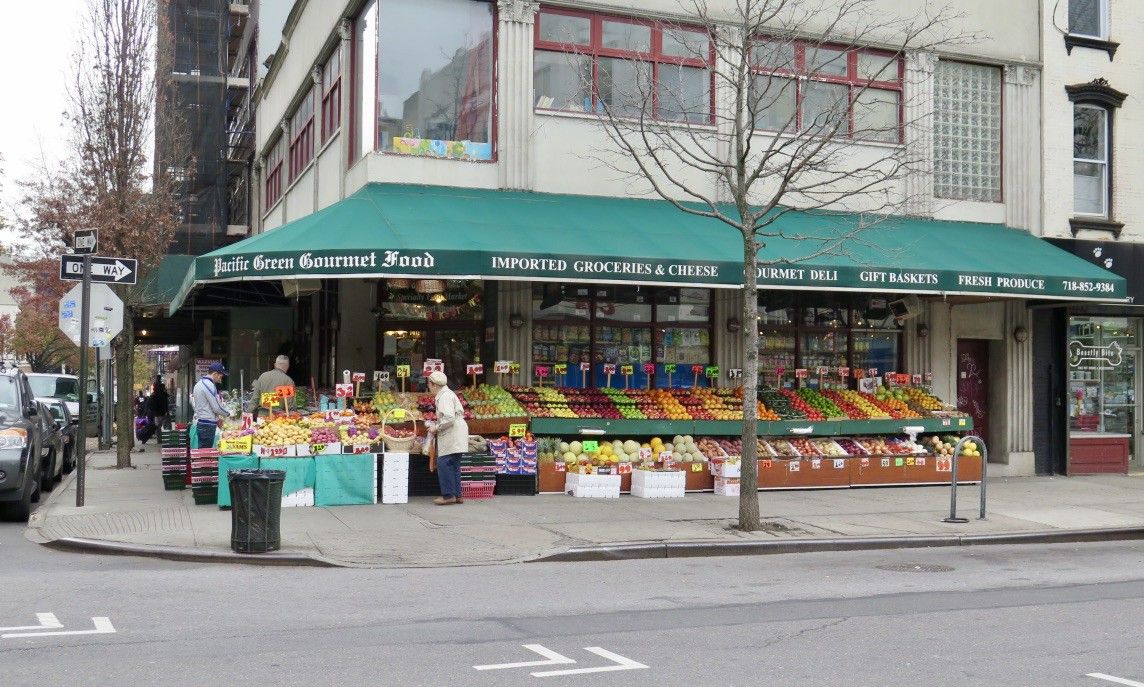
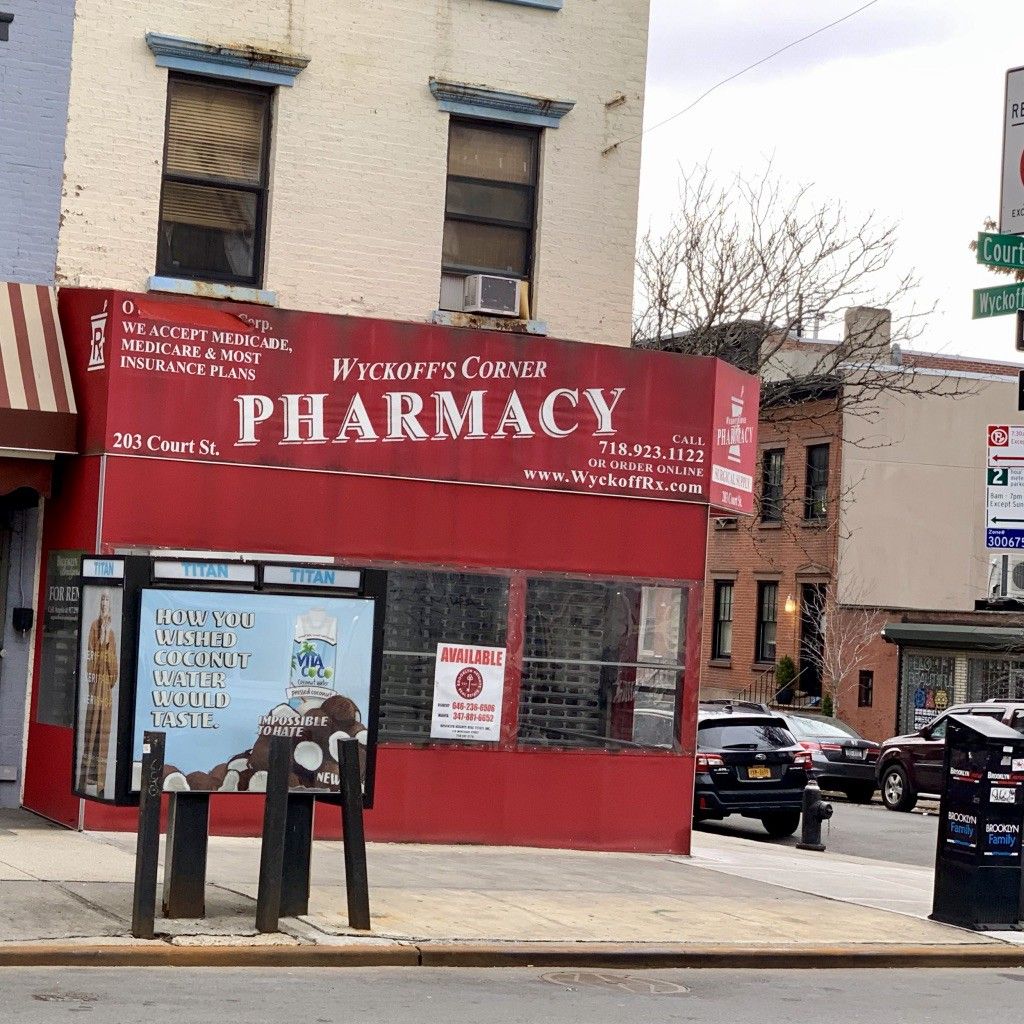
A beloved restaurant and the only outdoor cafe on Court Street recently closed due to constant rent increases. The last of two local pharmacies left last year, and two prized fruit and vegetable stands have disappeared as well
Q: What’s Wrong With Many New Buildings?
A: They Don’t Recognize the Importance of Street Life to Neighborhoods
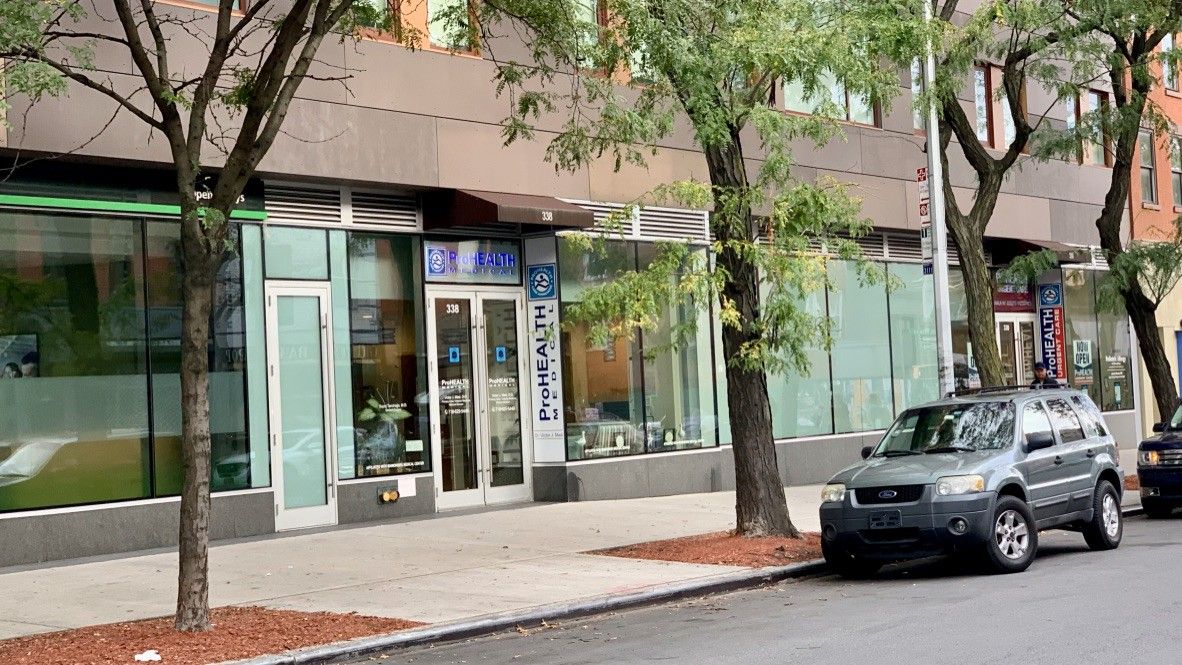
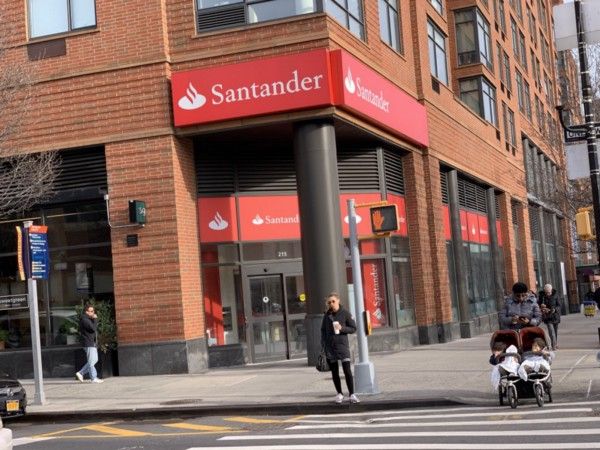
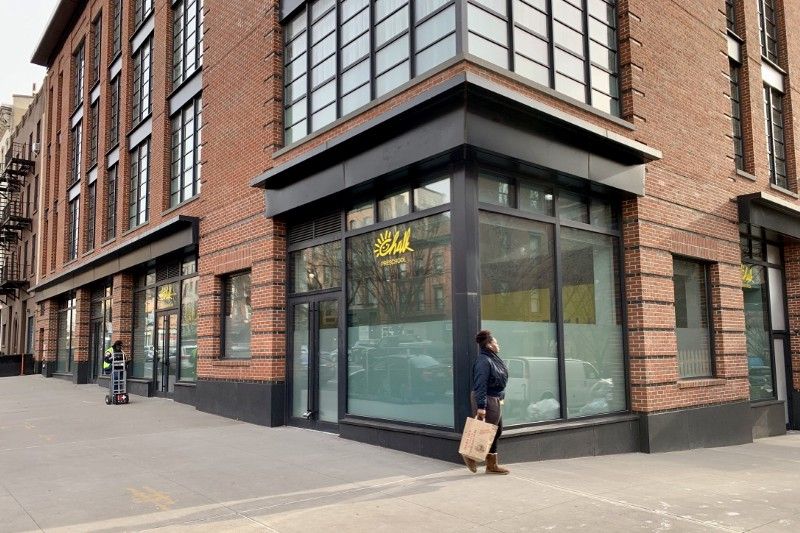
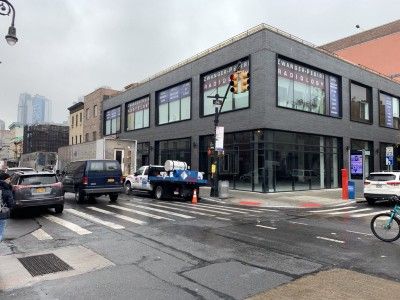
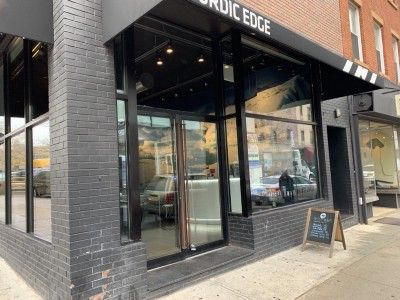
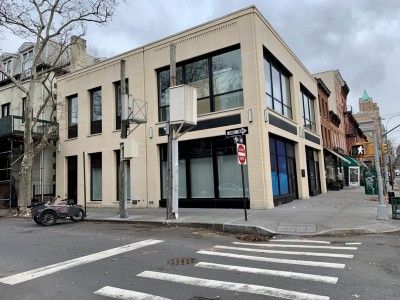
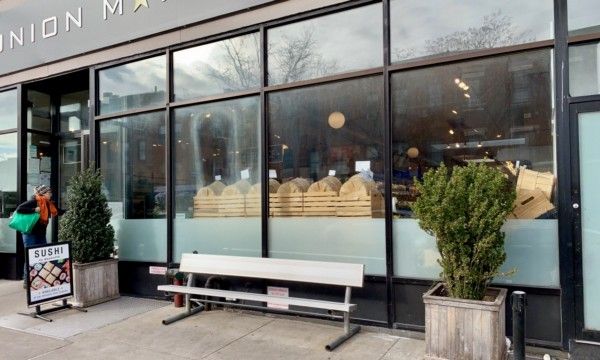
We often say...the corner creates a gateway into the neighborhood which defines how the rest of the block is perceived. The buildings above feel divorced from what goes on beyond the corner
Many new Brooklyn buildings significantly diminish the social-life possibilities of prominent corners, and erase the historic and human-scale qualities that once defined these neighborhoods. They are designed to attract national chains, which further undermines the unique identity of Cobble Hill and Carroll Gardens.
Invasion of the Real Estate Offices
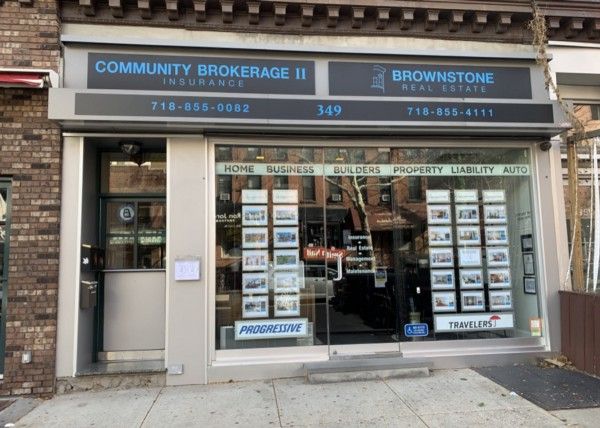
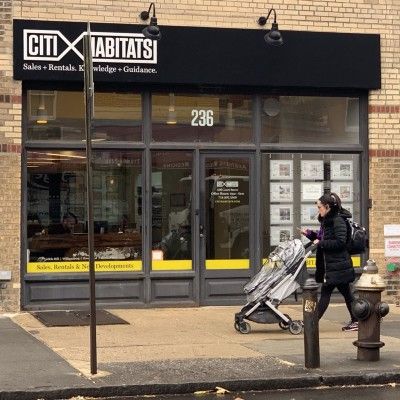
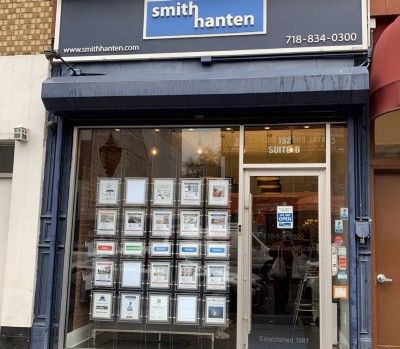
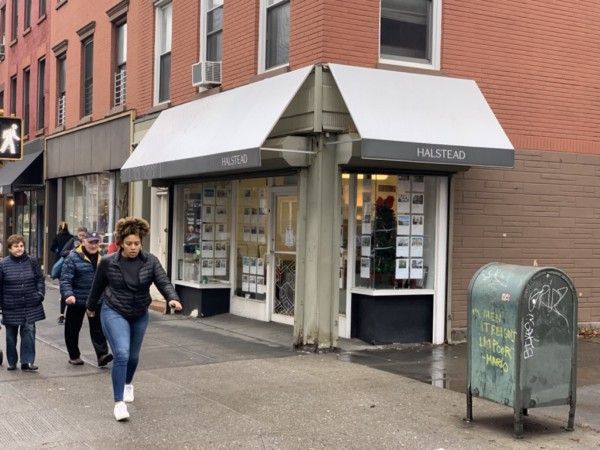
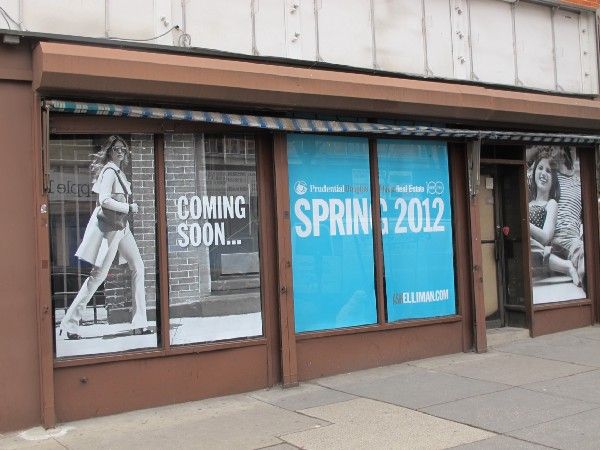
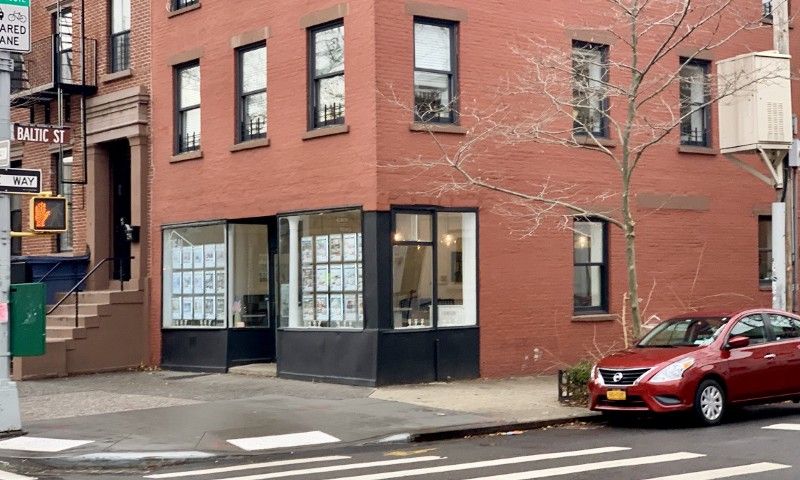
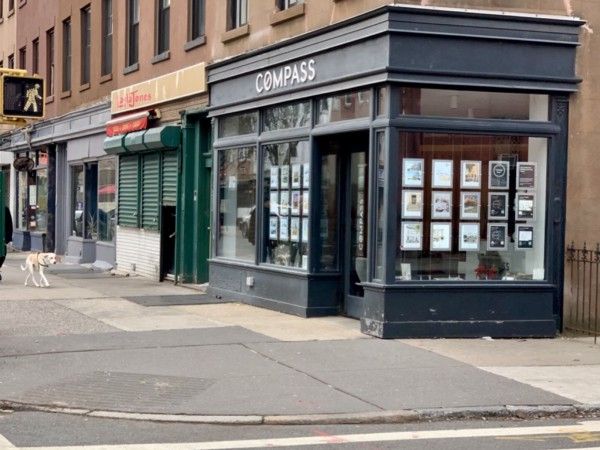
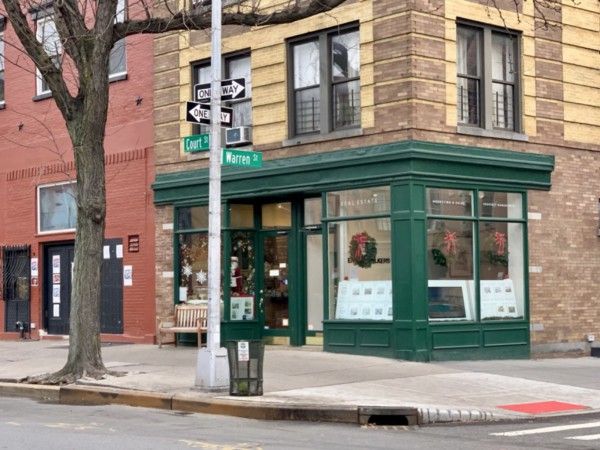
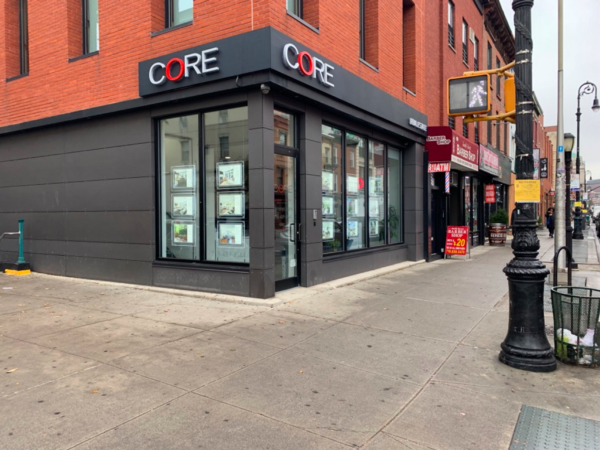
There are dozens of real estate offices in Cobble Hill and Carroll Gardens…far more than any community needs. They drive out locally owned retail, forcing people who shopped here for decades to go elsewhere—often needing to use a car.
Invasion of the Chain Pharmacies
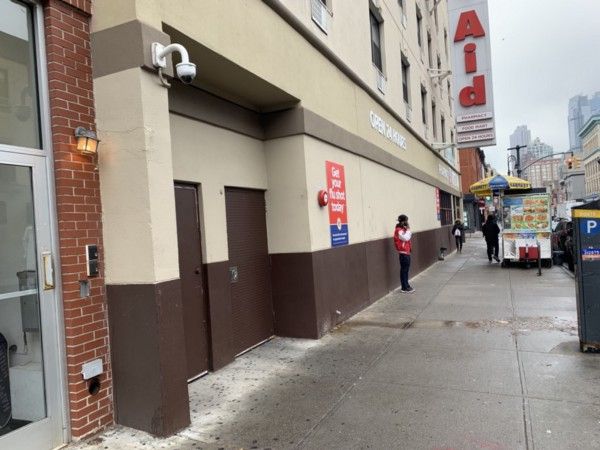
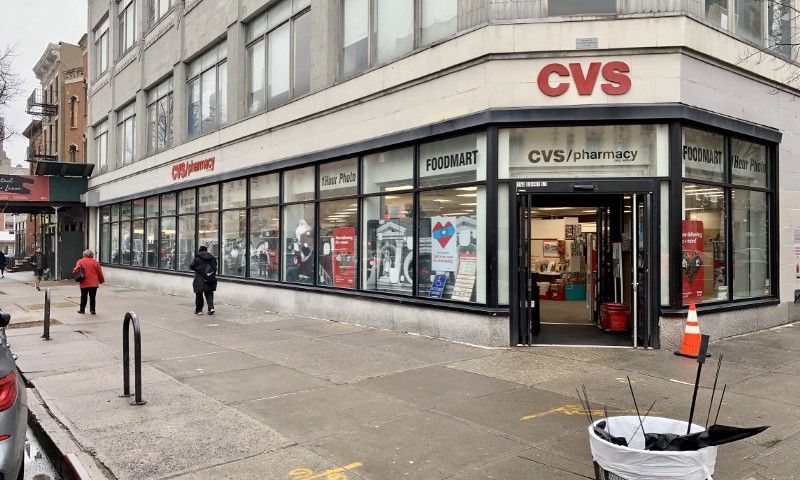
Why Do Schools Feel Like Fortresses?
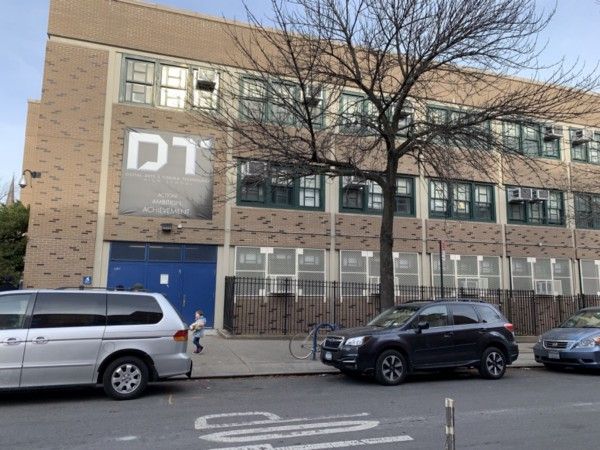
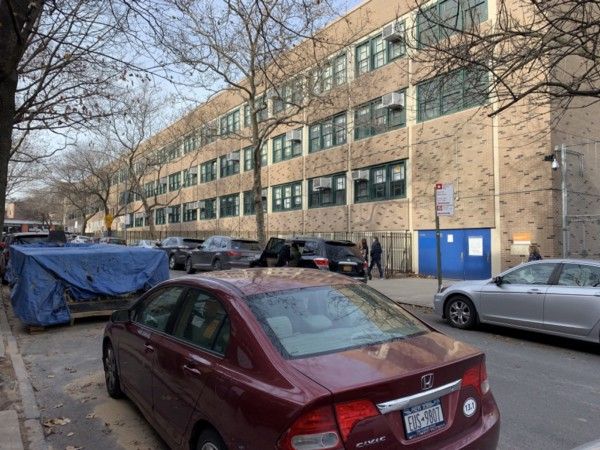
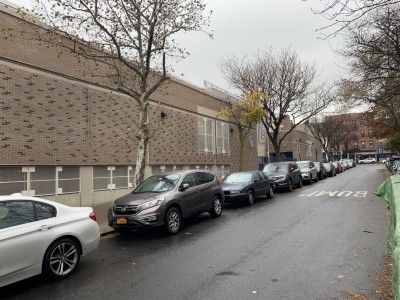
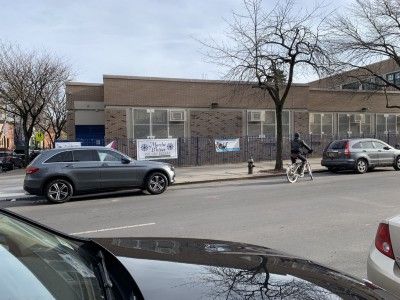
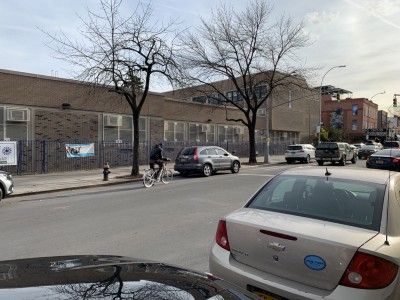
What New York Needs to Learn
The Good Life in Brooklyn is being chipped away by misguided development that makes walking less and less interesting. The immediate result is a weakening of the social fabric, along with an increase in traffic, carbon emissions and other environmental woes.
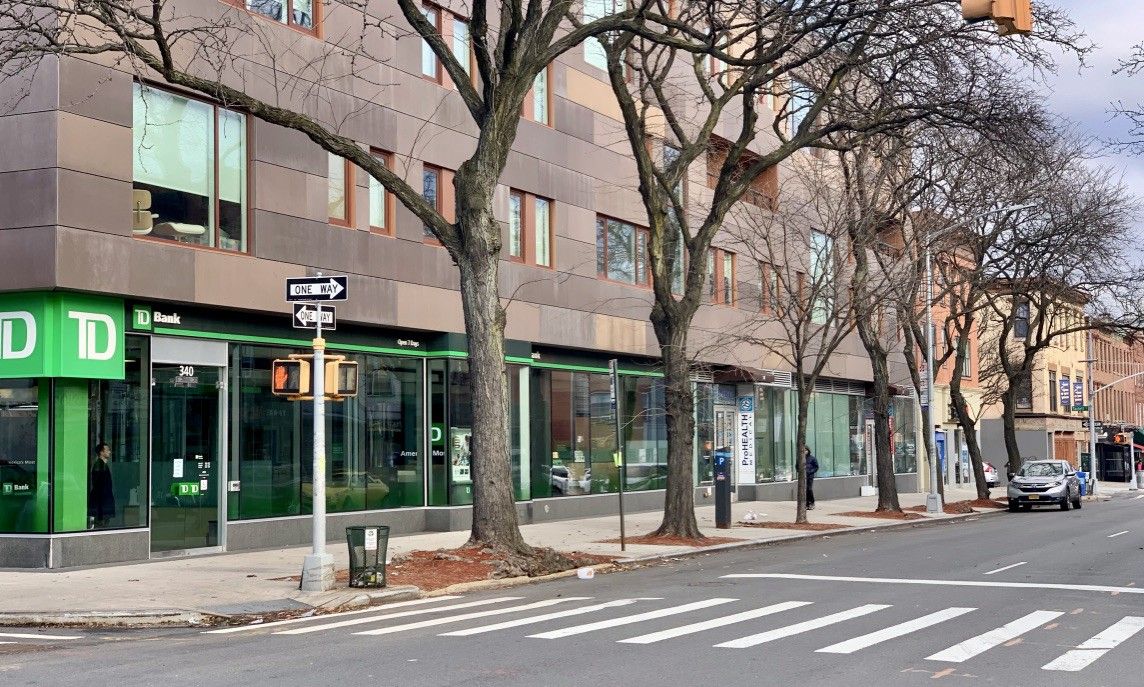
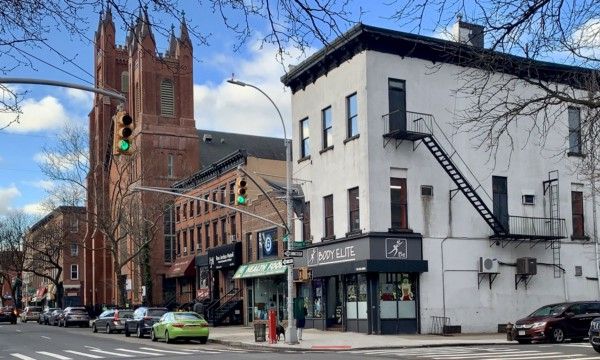
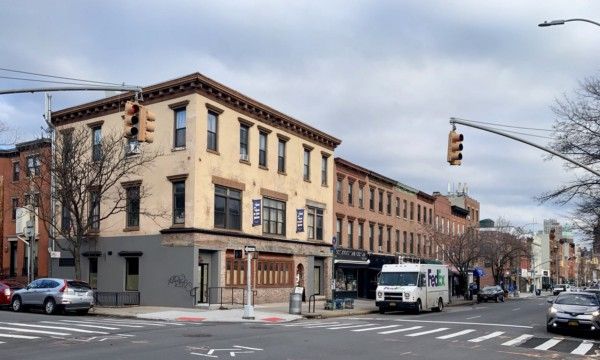
Two corners that have since changed post pandemic. Far left the buildin colaptsed. Far rigth a new owner took over. See below for drastic changes.
After:
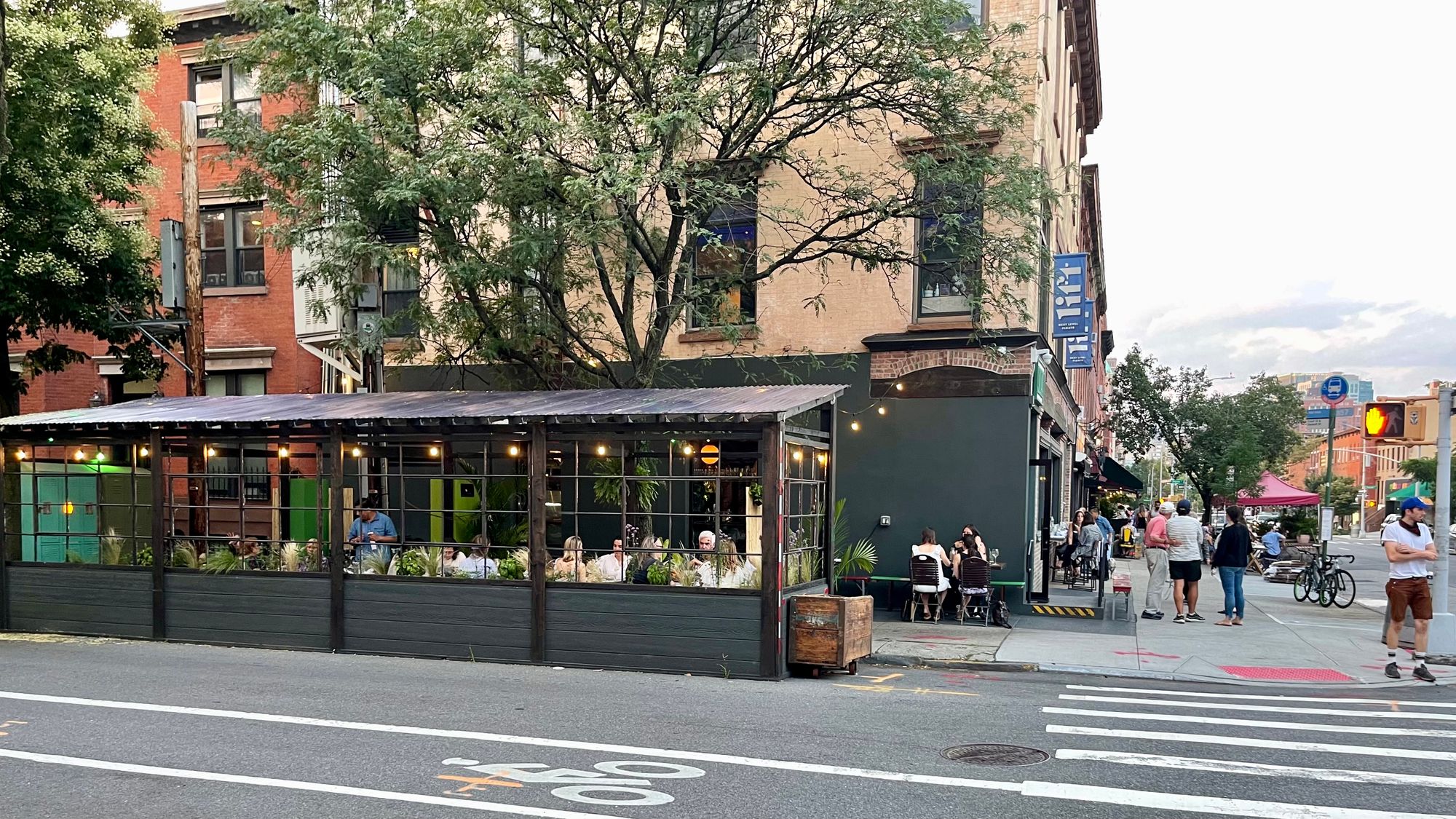
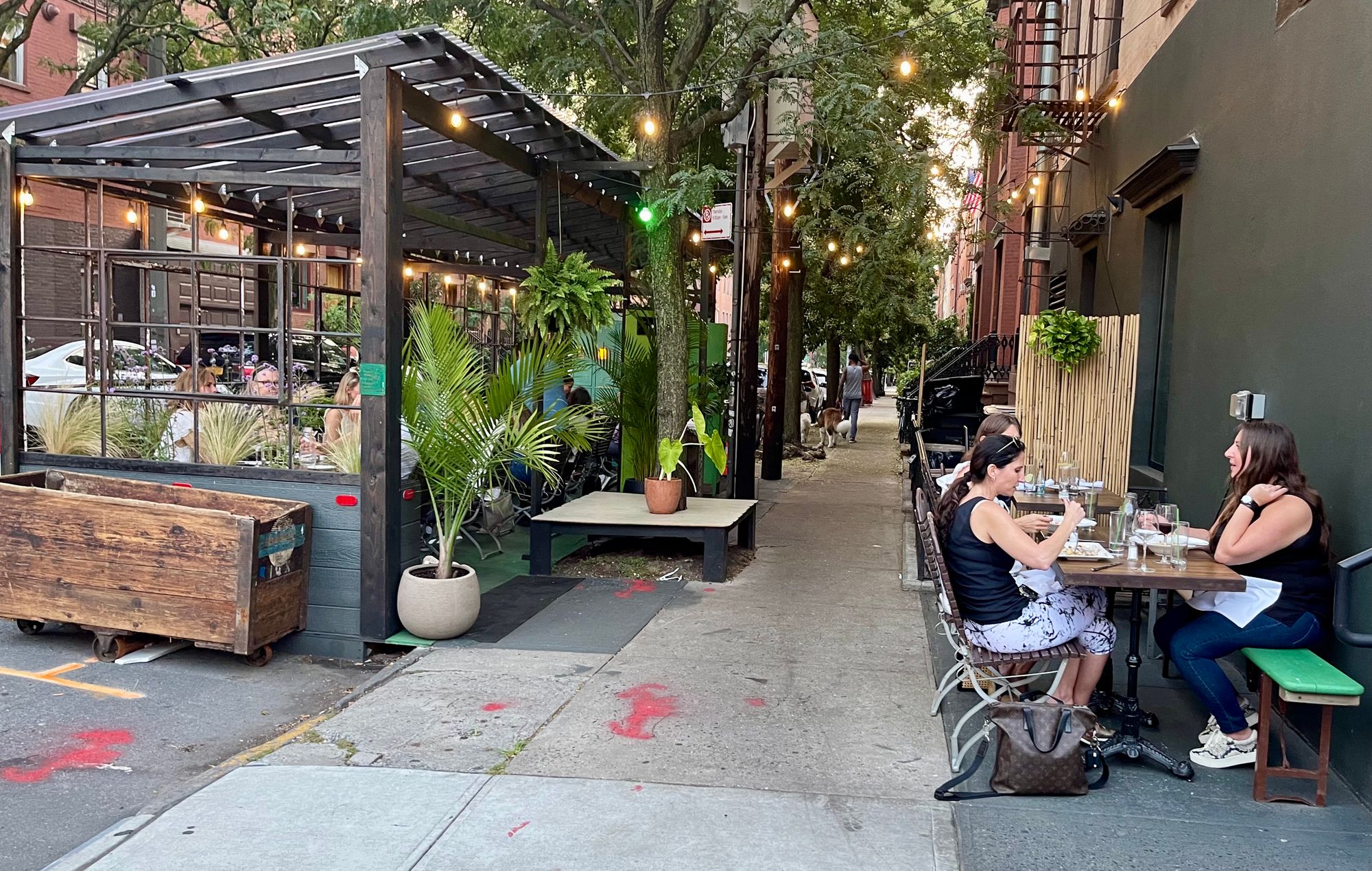
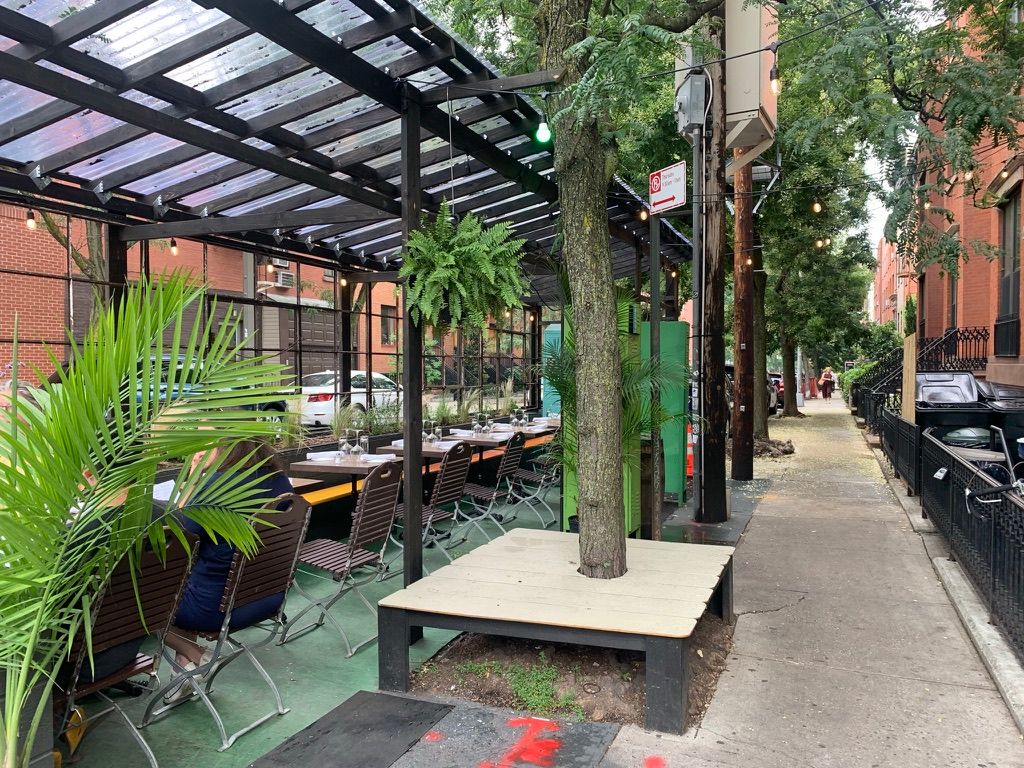
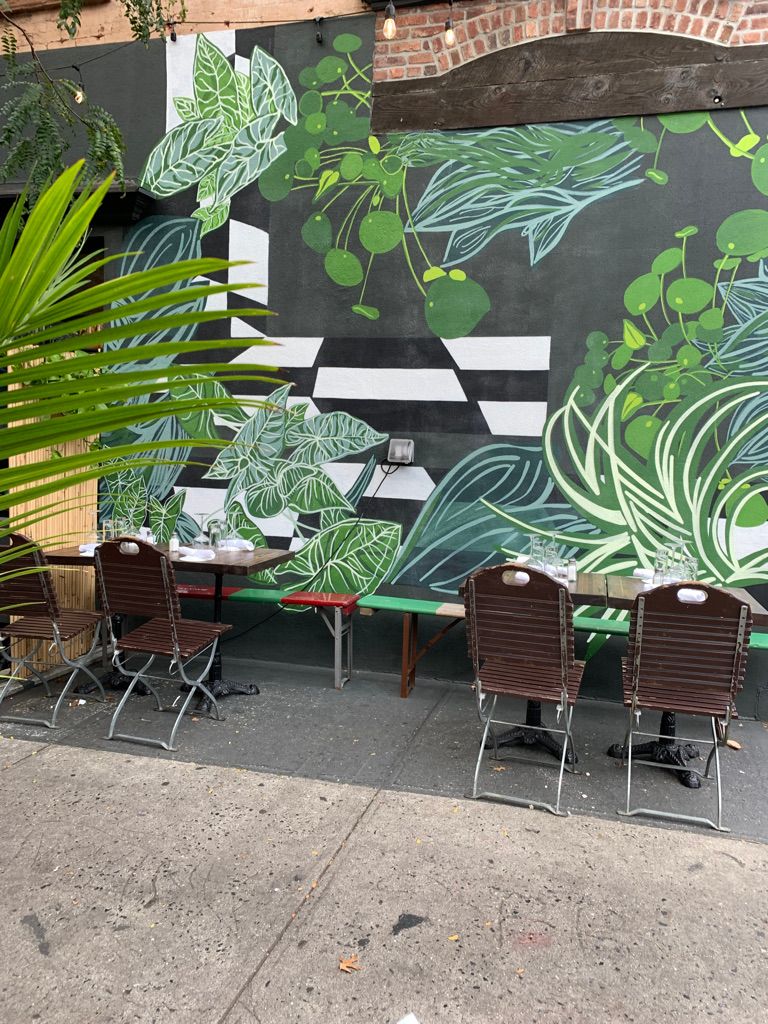
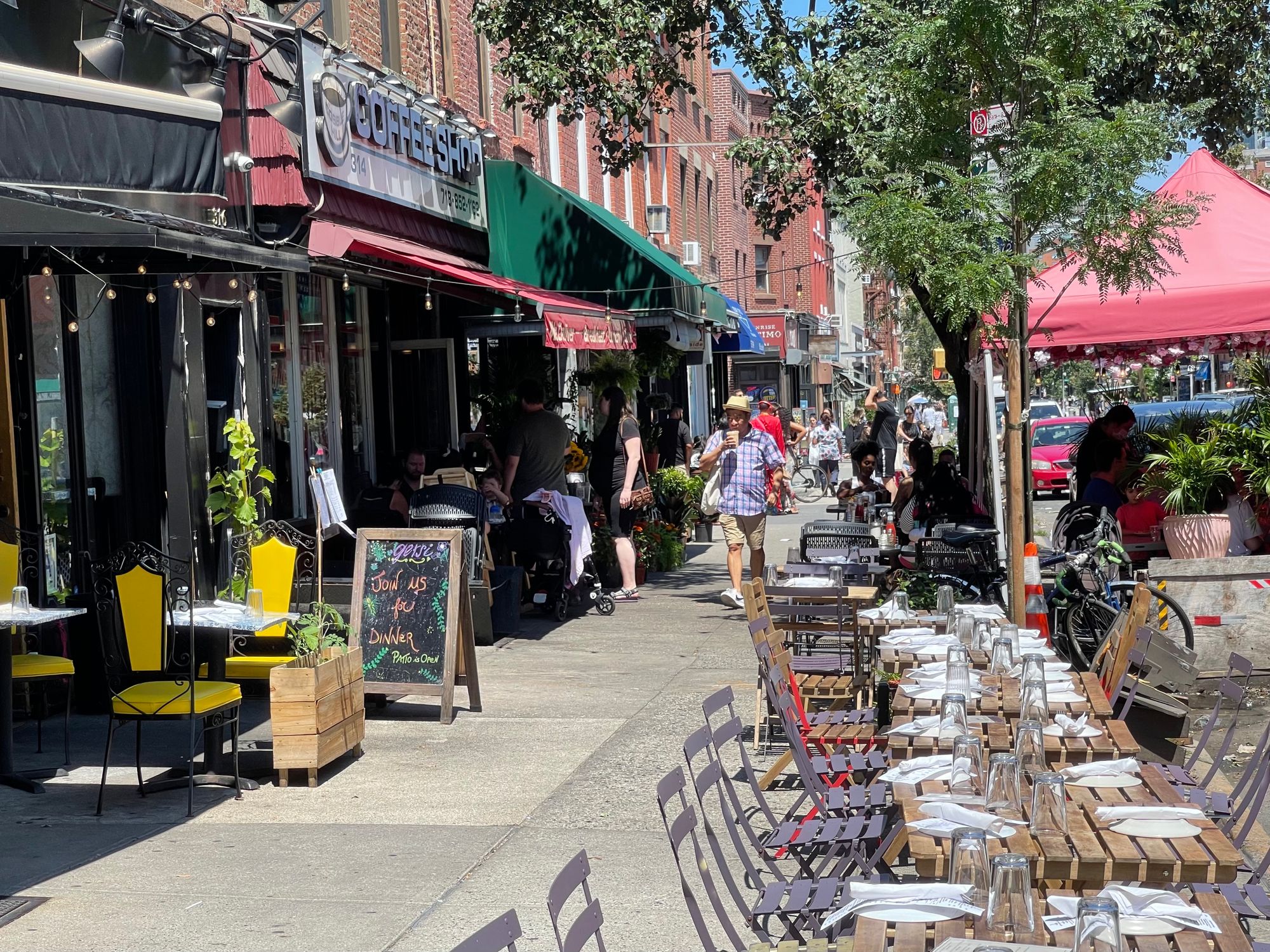
Political and business leaders in New York City still do not understand how current development trends unravel close-knit urban neighborhoods. Neighborhoods in Paris offer inspiration for how to do things differently to strengthen the community and addresses looming threats like climate disruption.
The scenes from Paris here show the importance of community and environmental policies that focus on “greening the city” — which is part of a comprehensive climate initiative undertaken by Mayor Anne Hidalgo. These policies are popular with the public because they improve neighborhood life at the same time as saving the Earth. New York City has a lot of catching up to do. A similar bold agenda, powered by communities acting in their own self-interest, would ensure that New York remain one of the world’s top cities.
We will continue to draw attention to the best cities in the world by highlighting their assets and the underlying philosophies that shape their growth. For example, we plan to show how New York City’s waterfront is suffering under the influence of projects that are designed to win international competitions, not enhance the lives of residents. We will compare this to the Paris waterfront, which has adopted a different strategy over the last 15 years that created what we believe is one of the world’s best waterfronts.
For More on Paris:
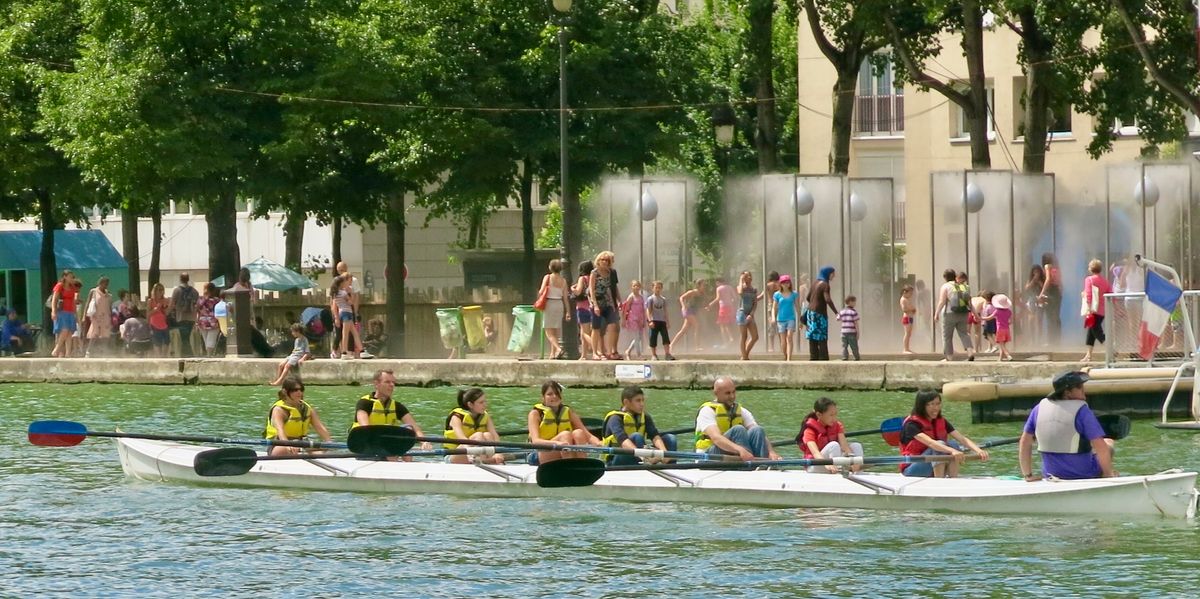
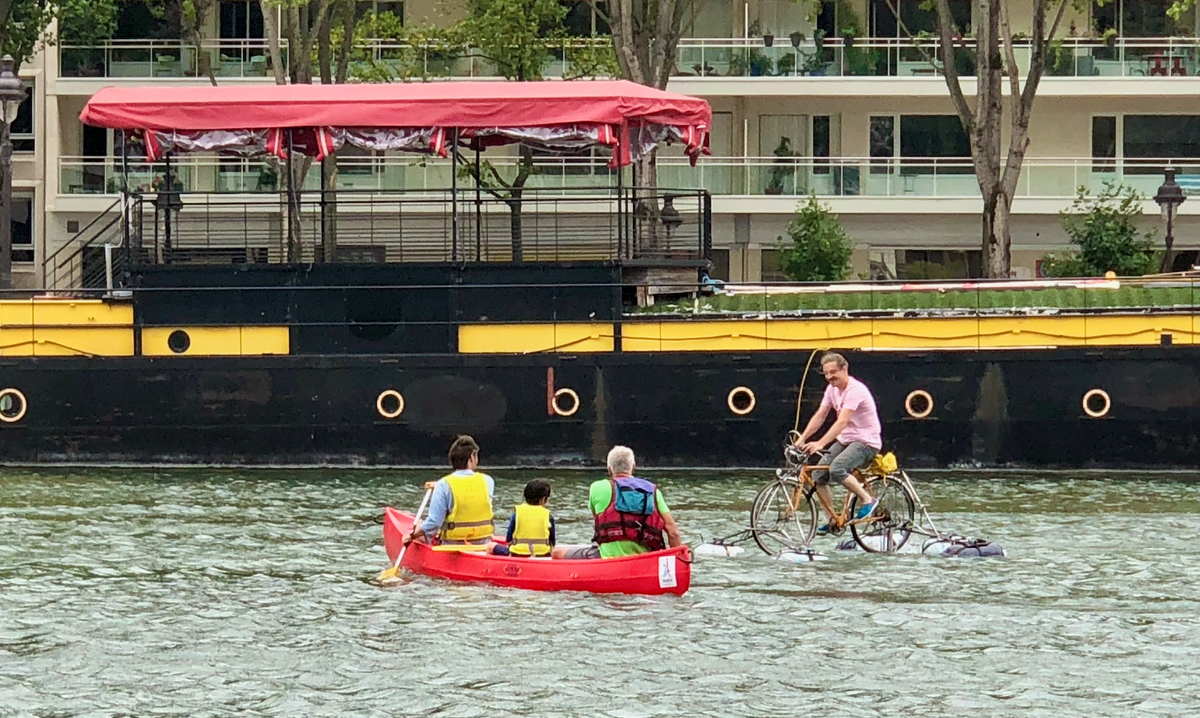
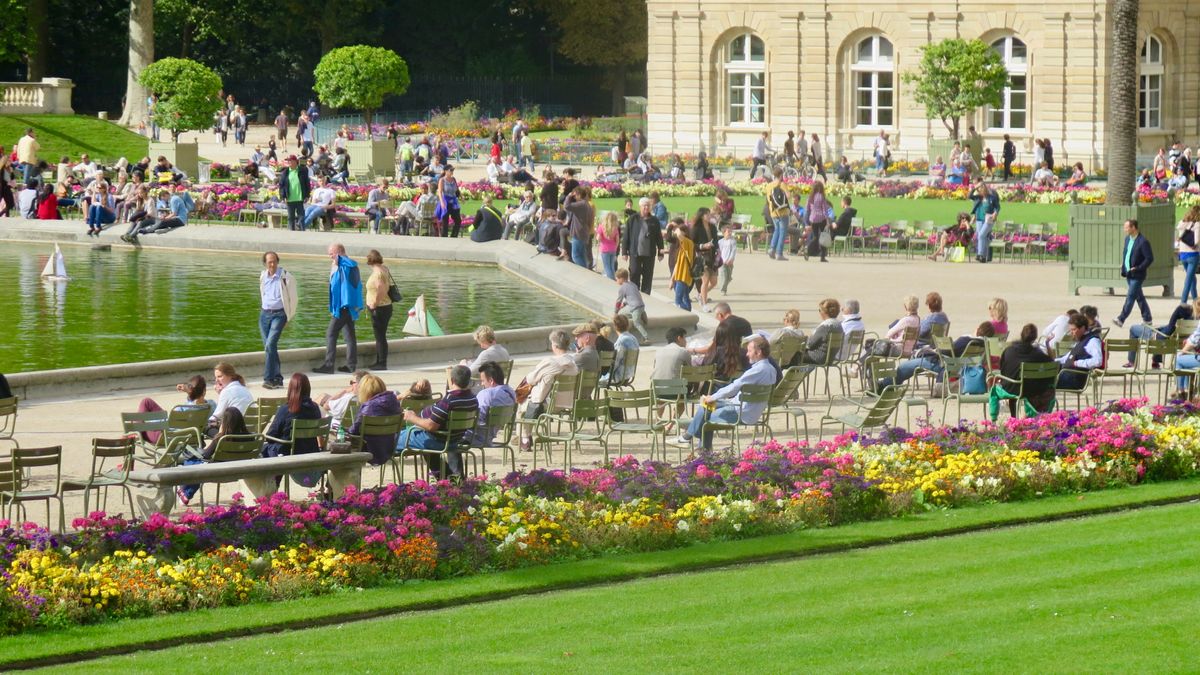
For More on NYC:
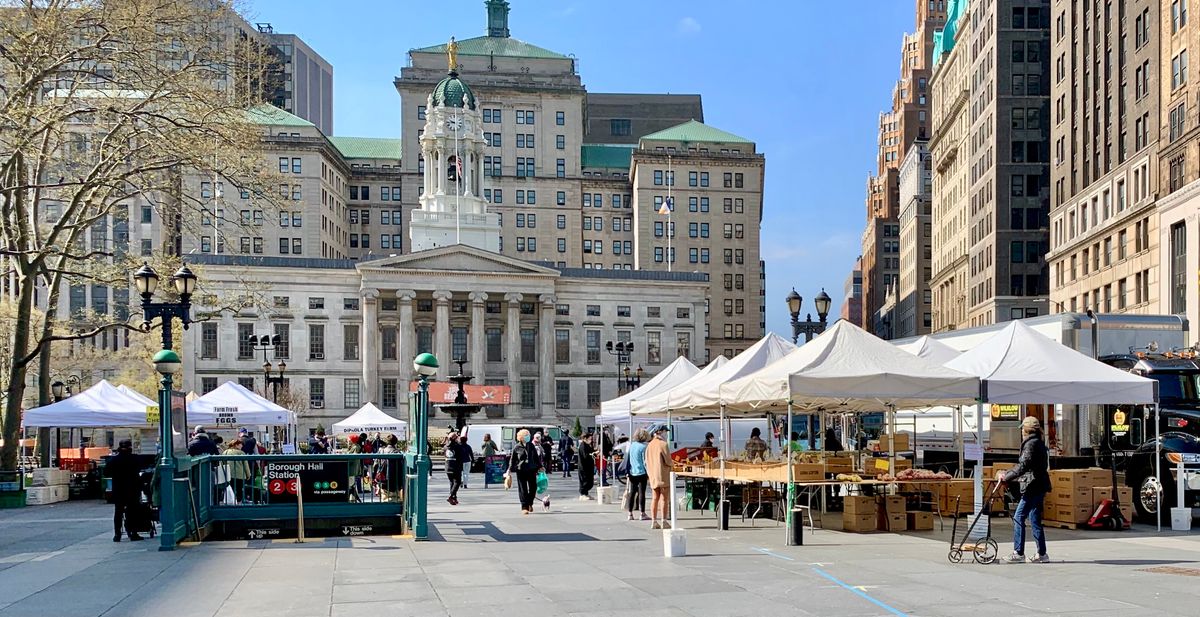
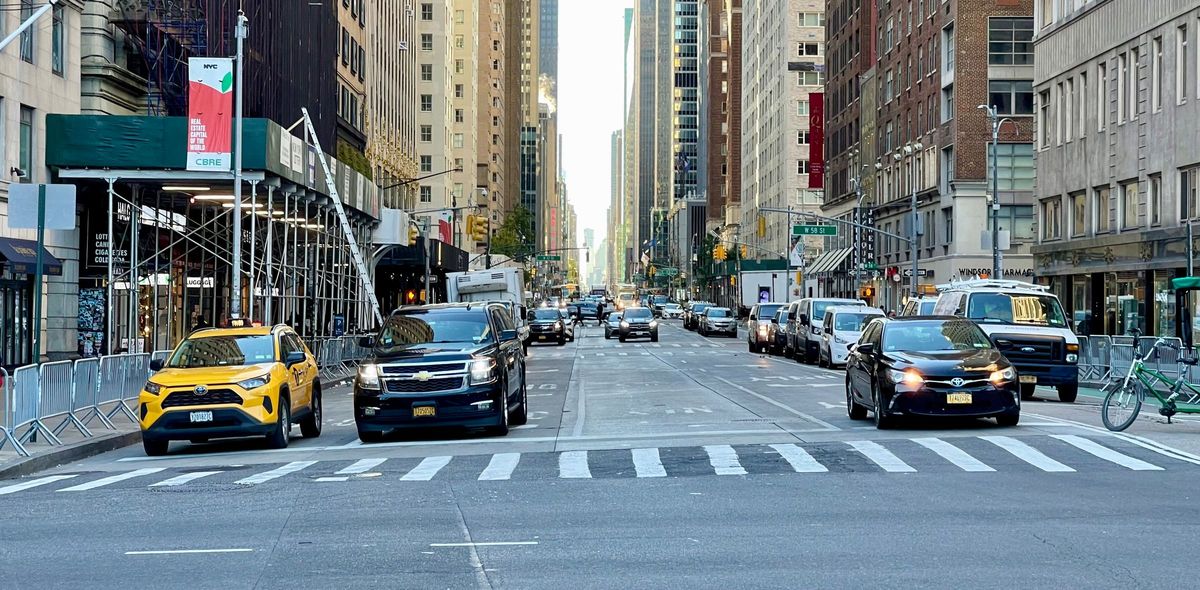
Social Life Project’s mission is to highlight what makes public spaces thrive, drawing from communities around the world. Social Life Project is one of two inaugural program of our new non-profit the Placemaking Fund. Our second program is PlacemakingX, a global network of leaders who together will accelerate placemaking as a way to create inclusive, healthy, and beloved communities. To make the spaces we live into places we love.
Learn more about our two programs:

